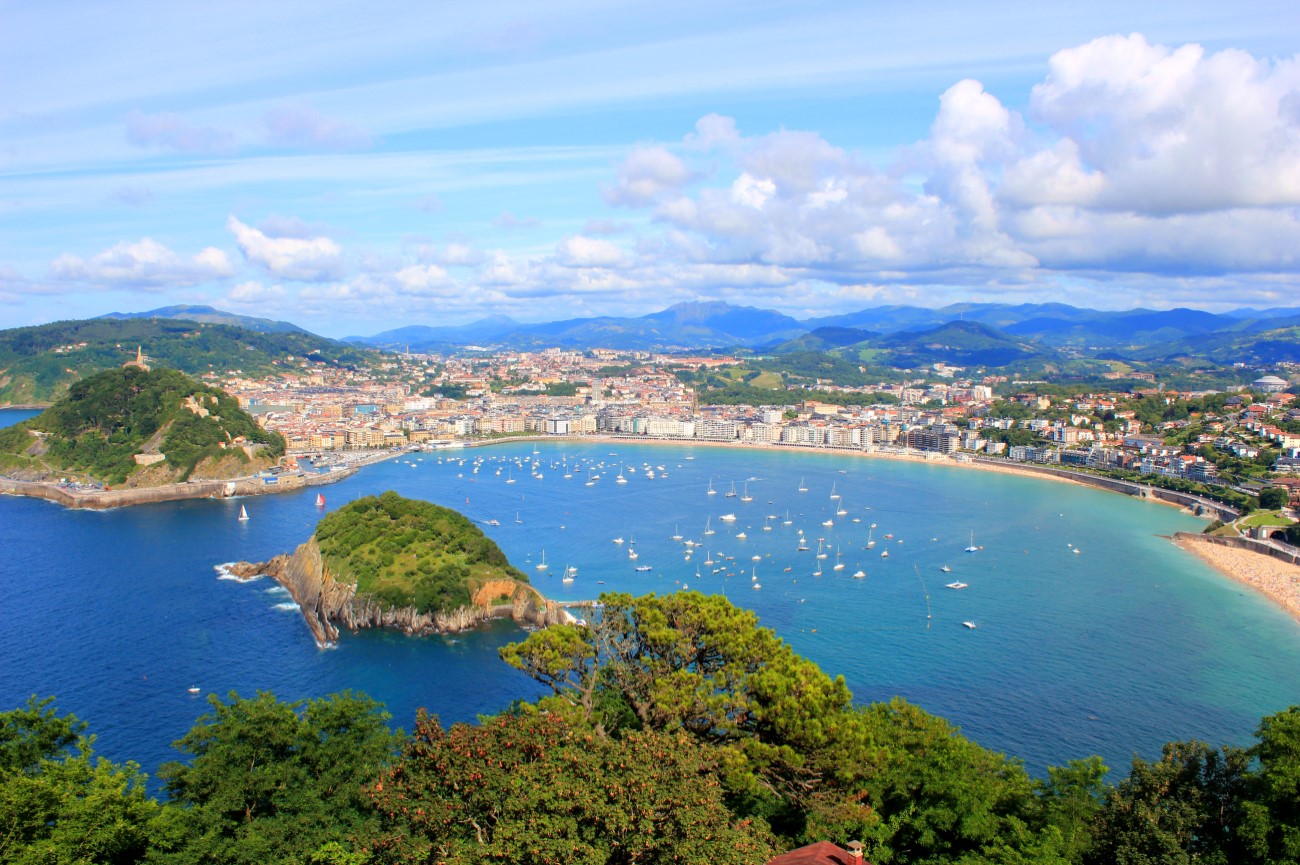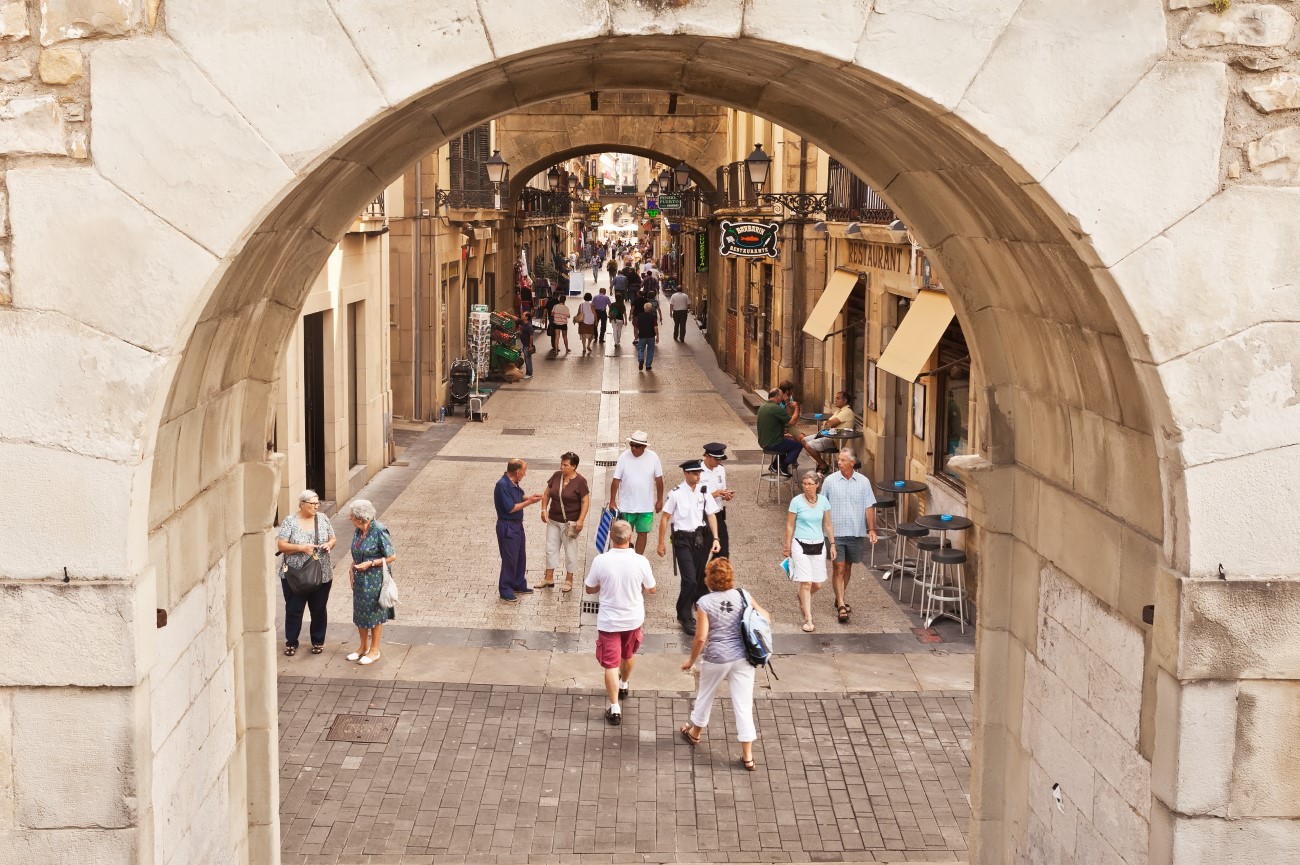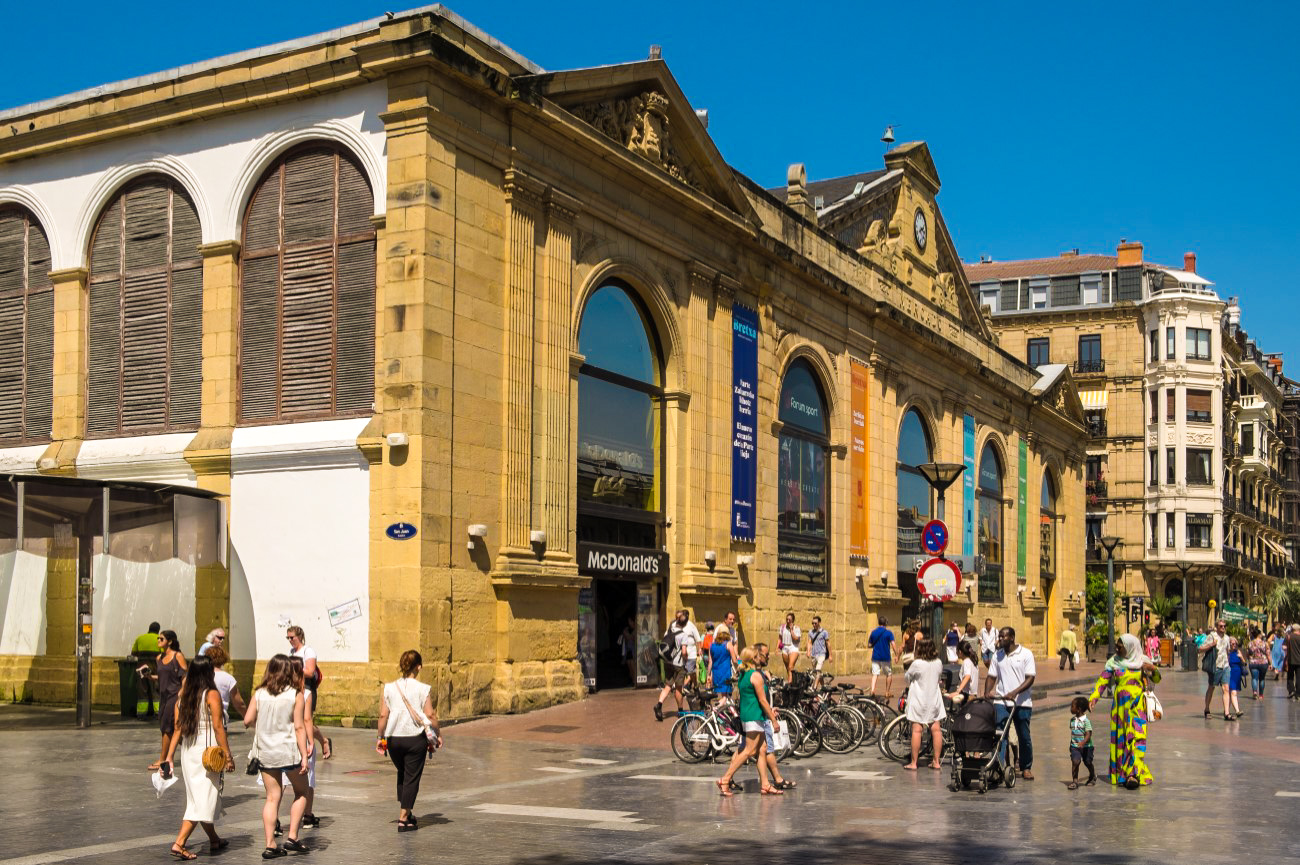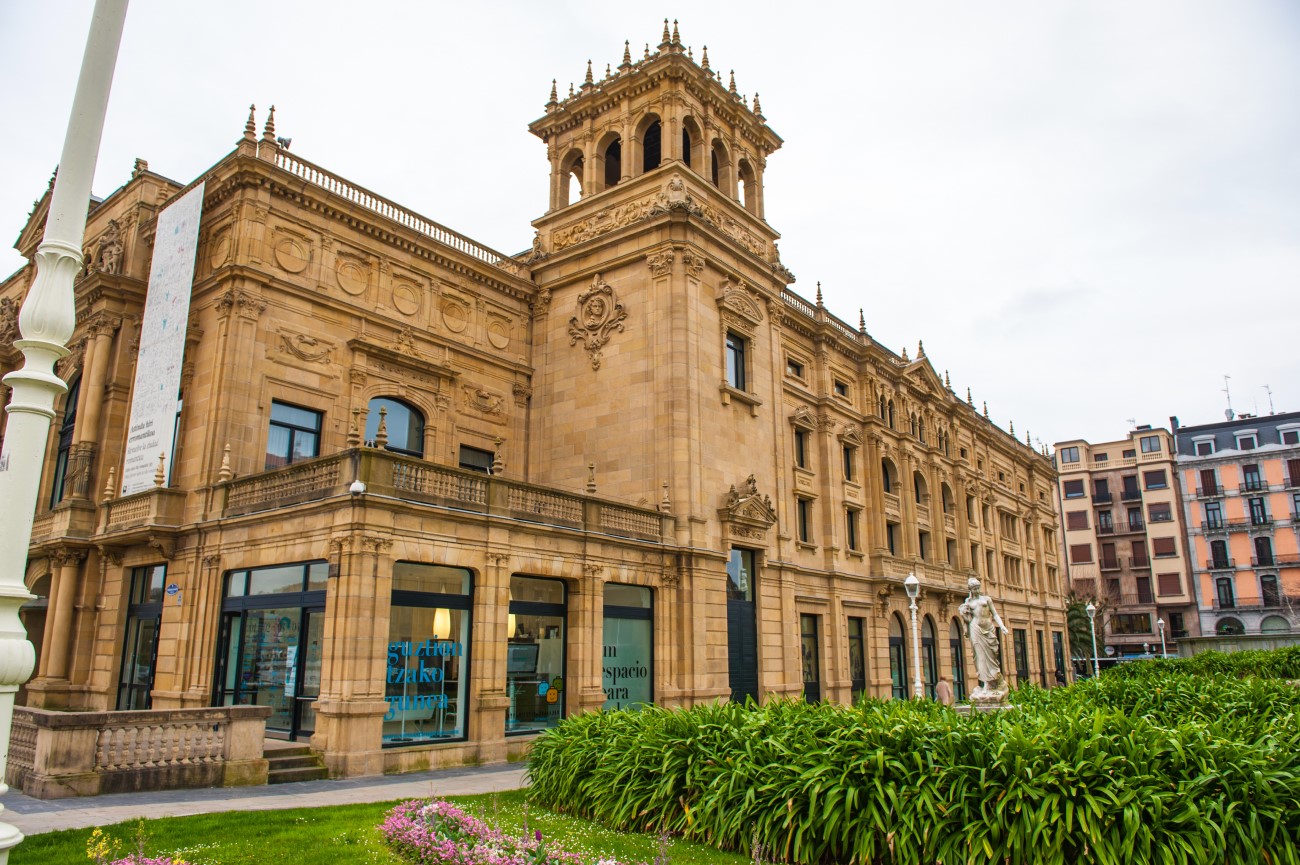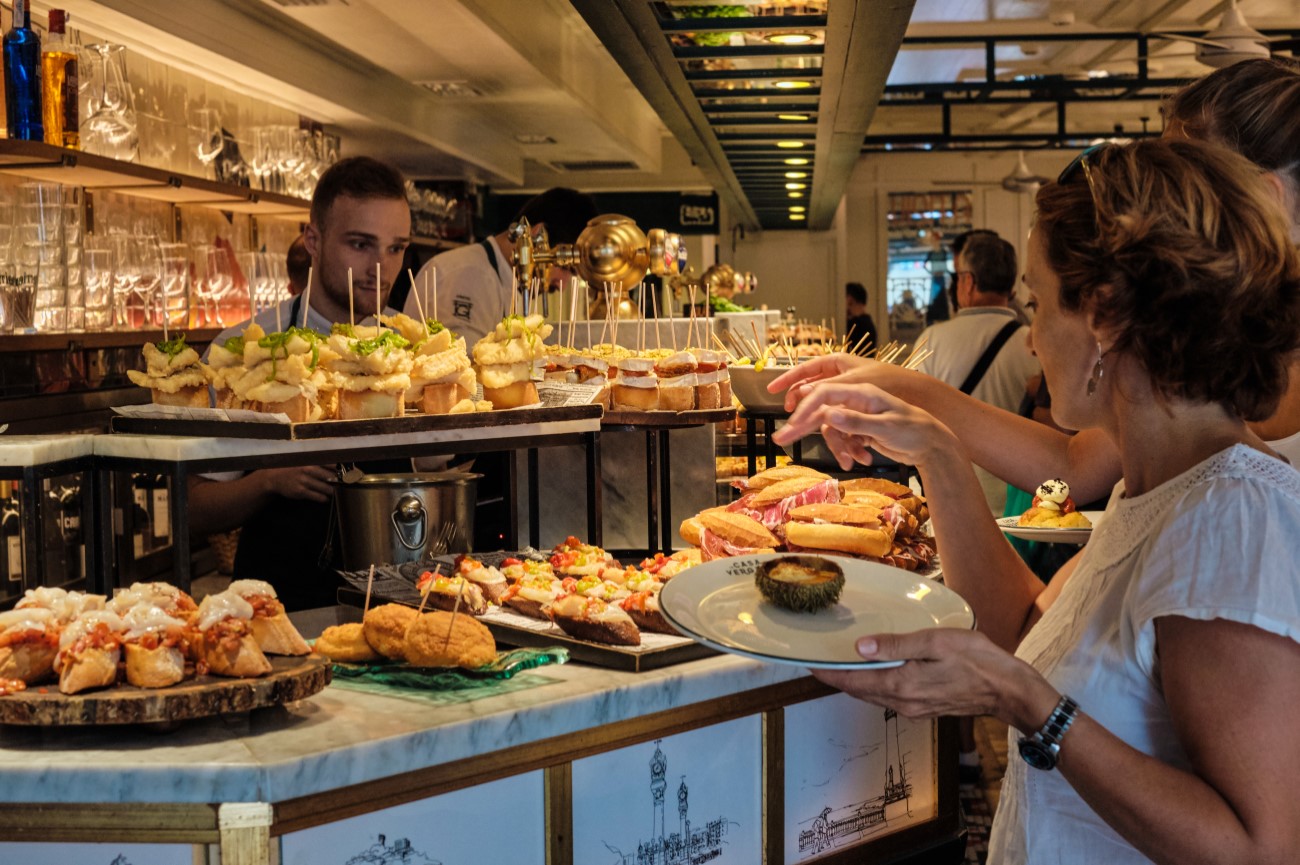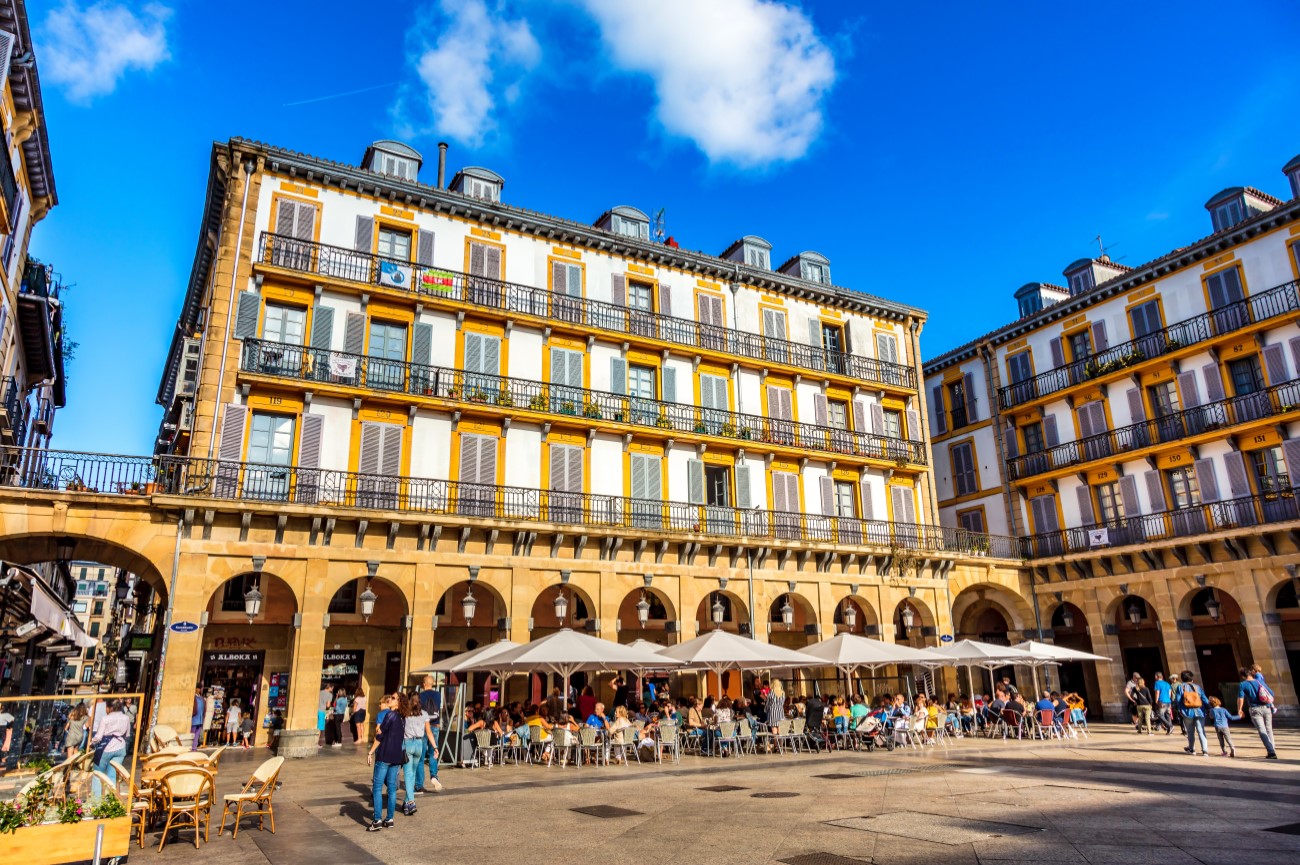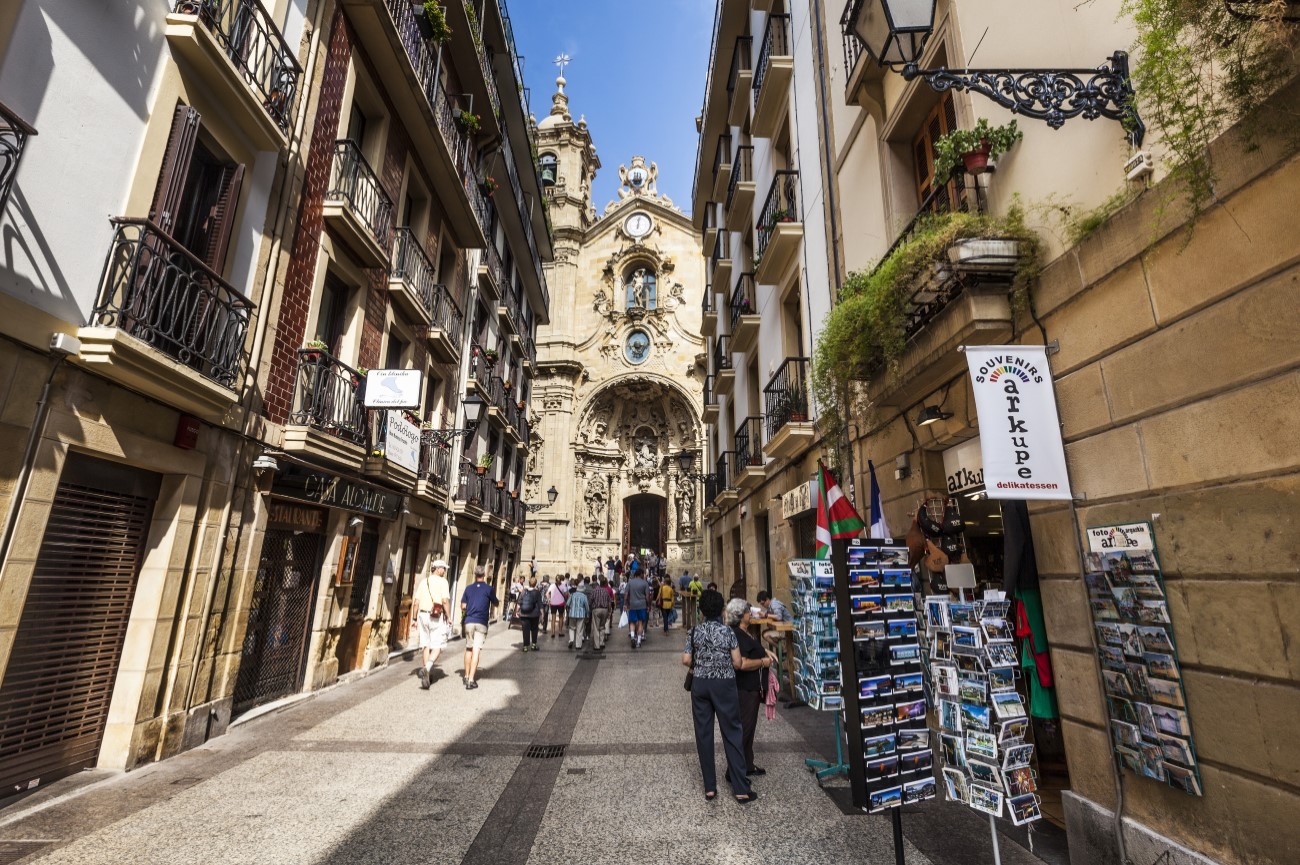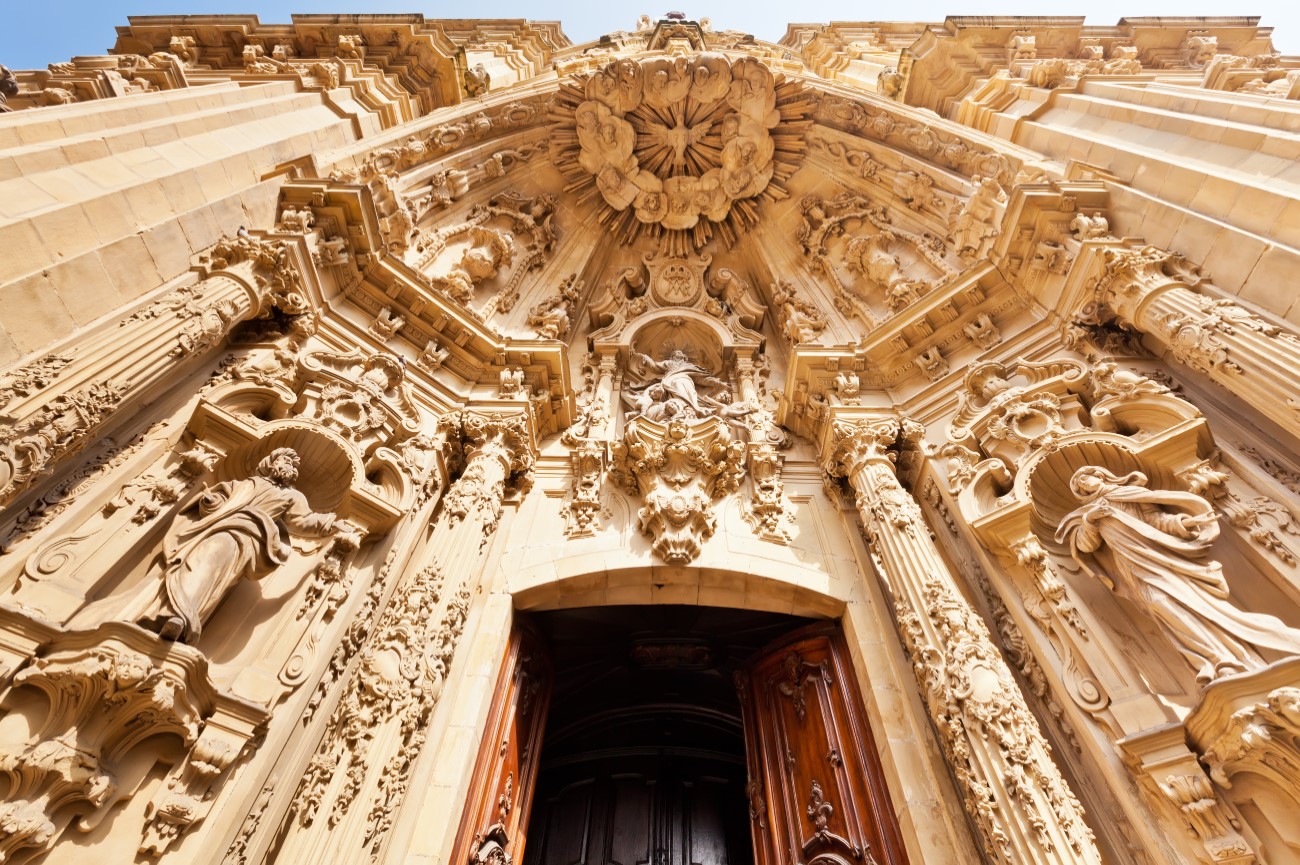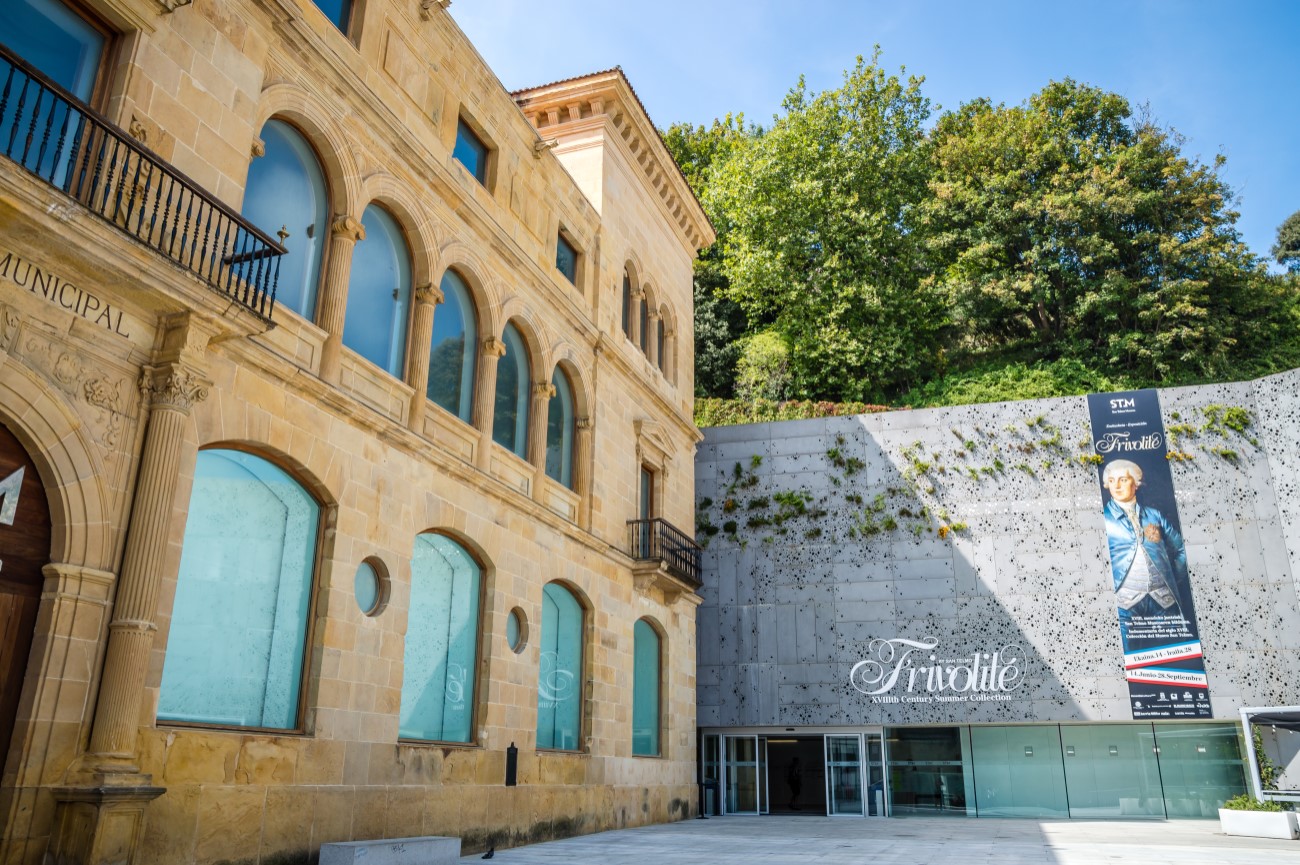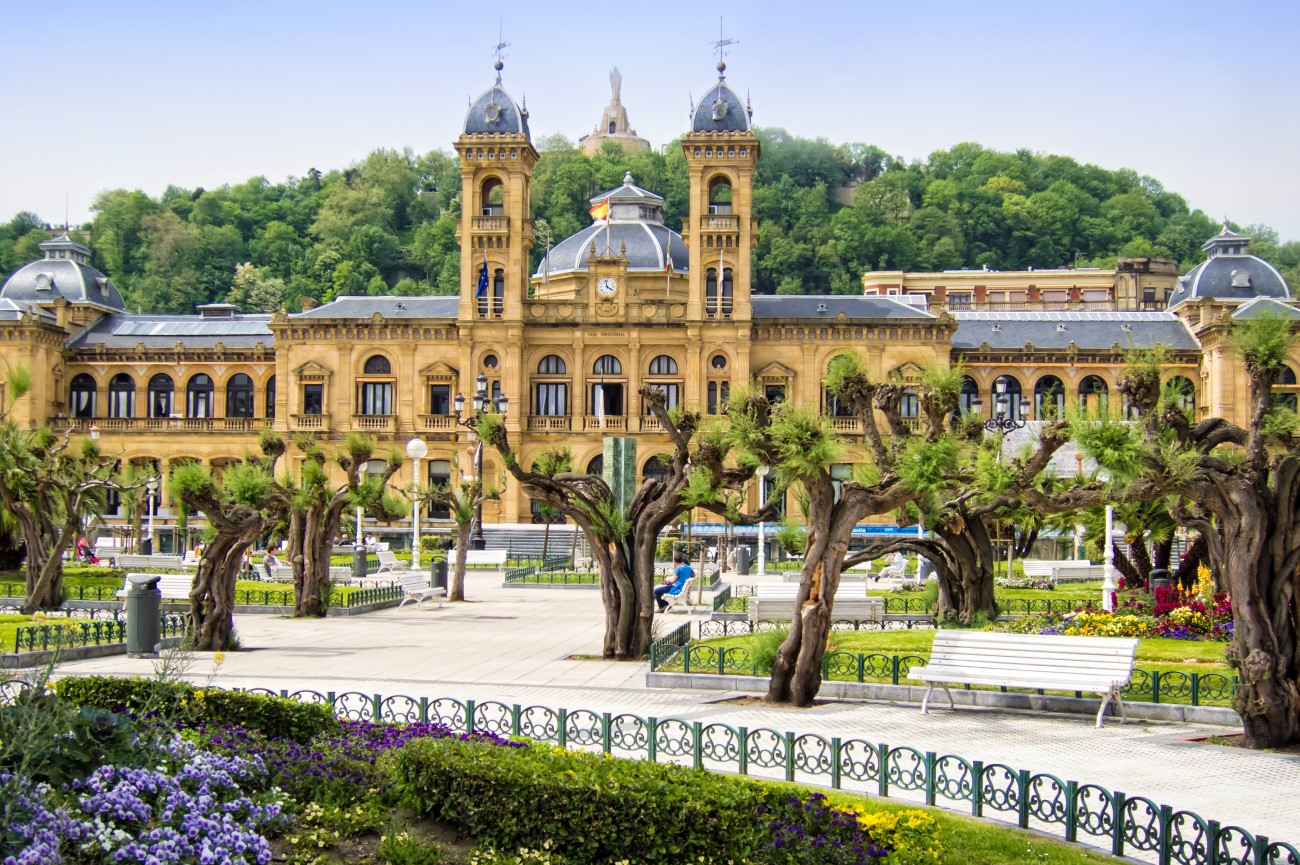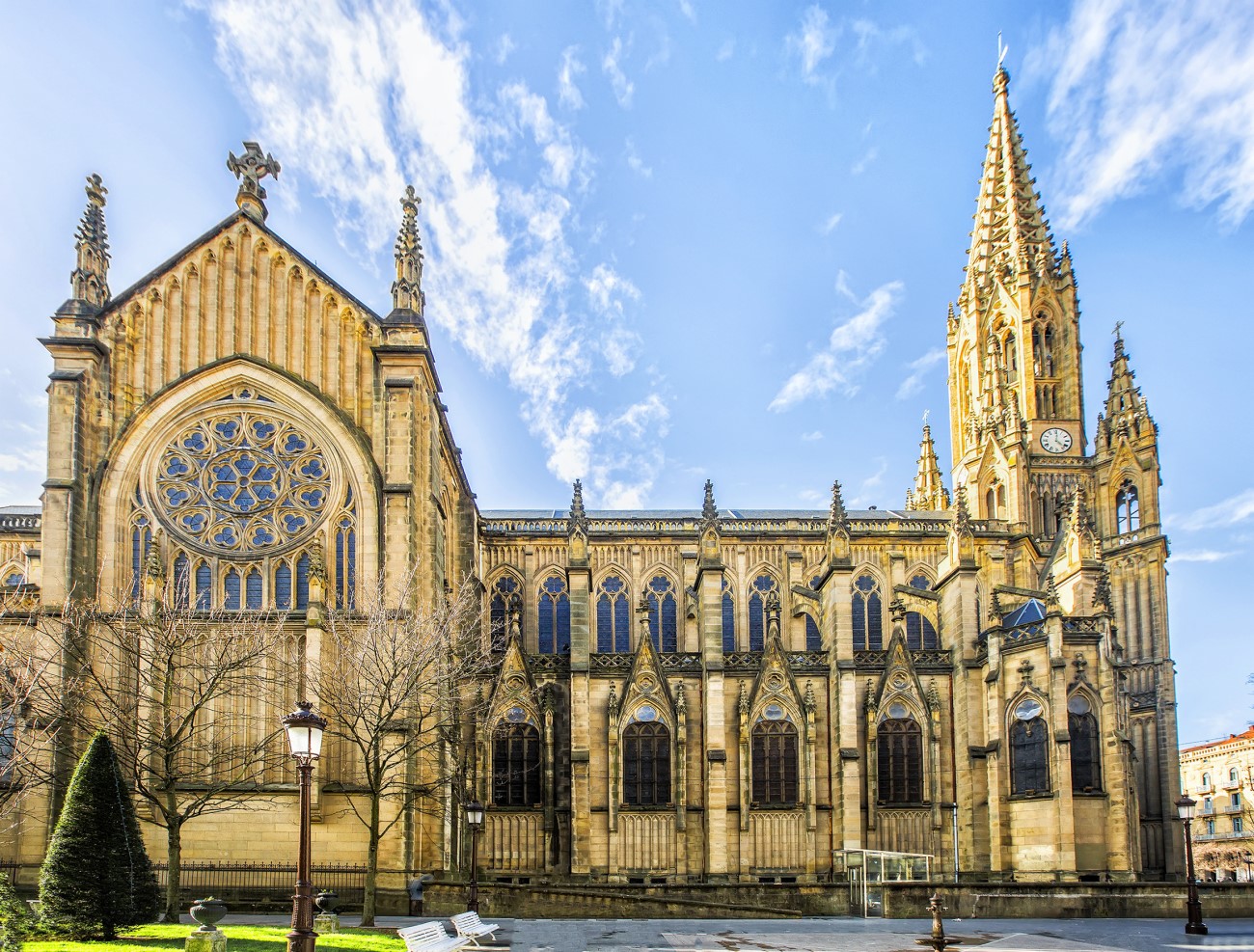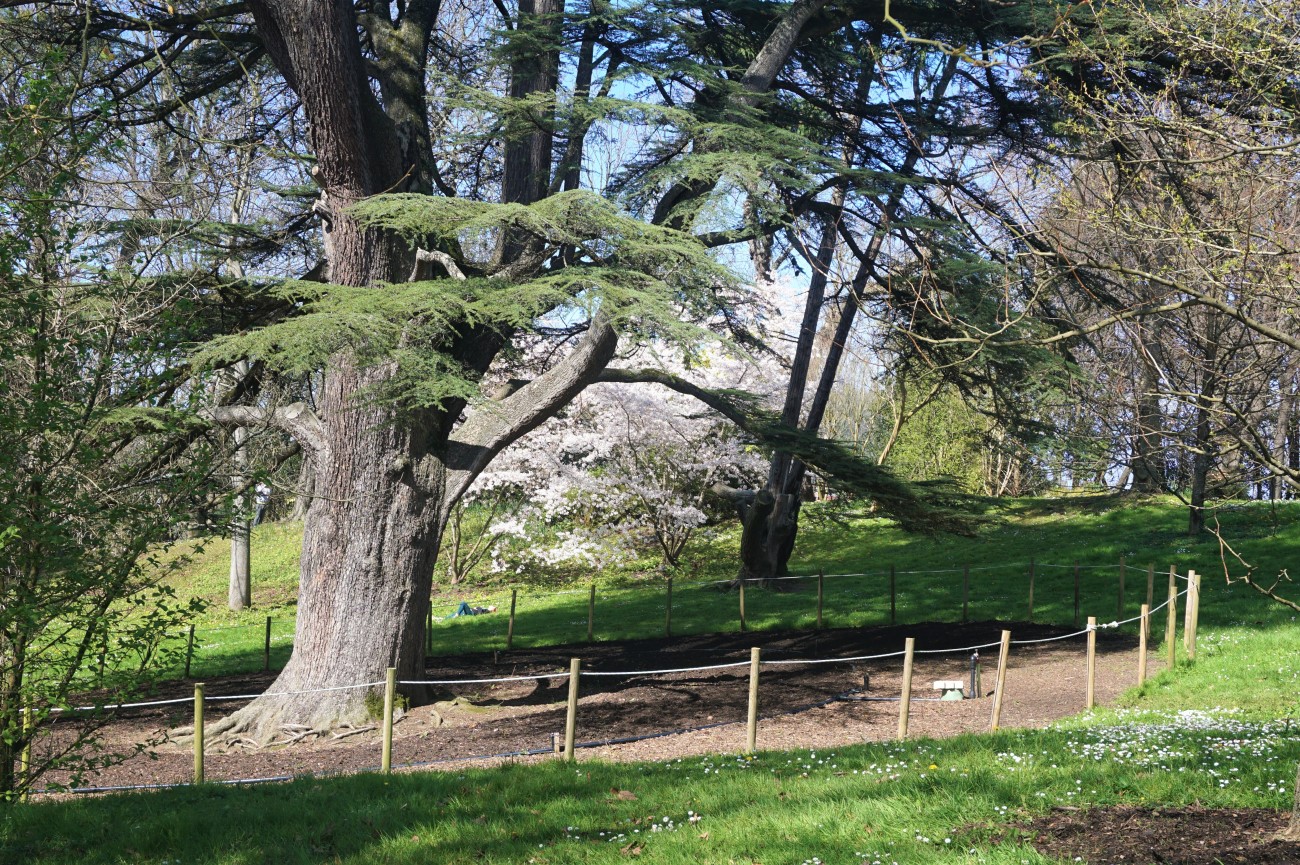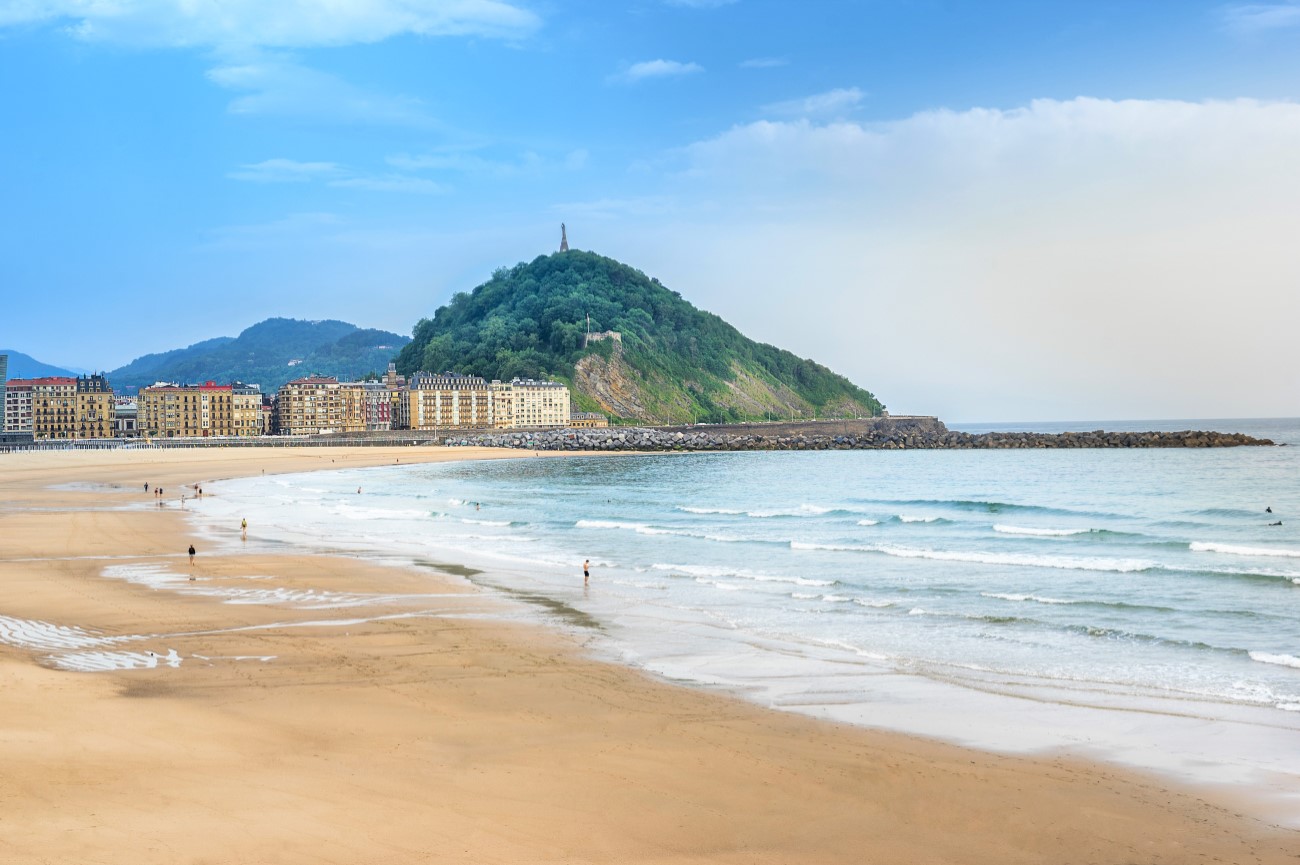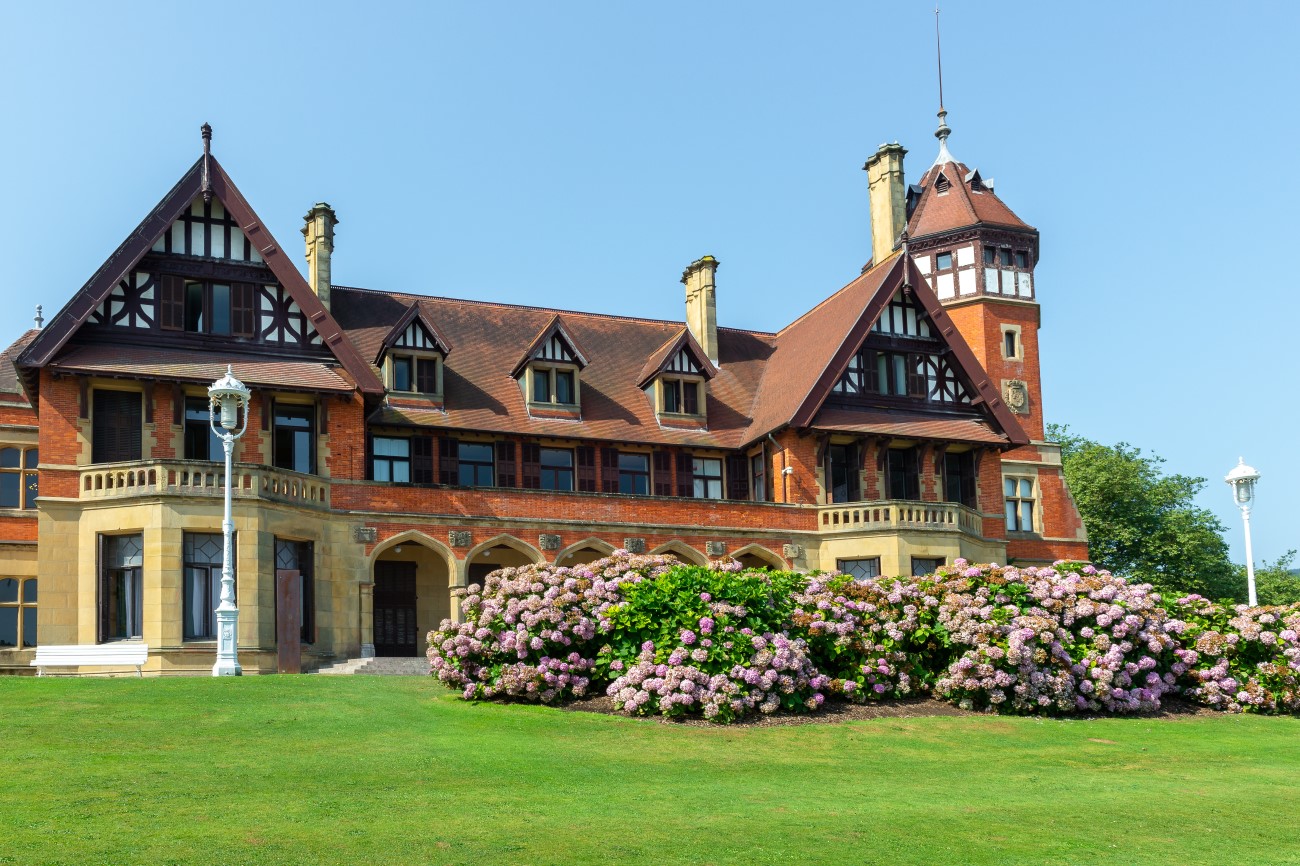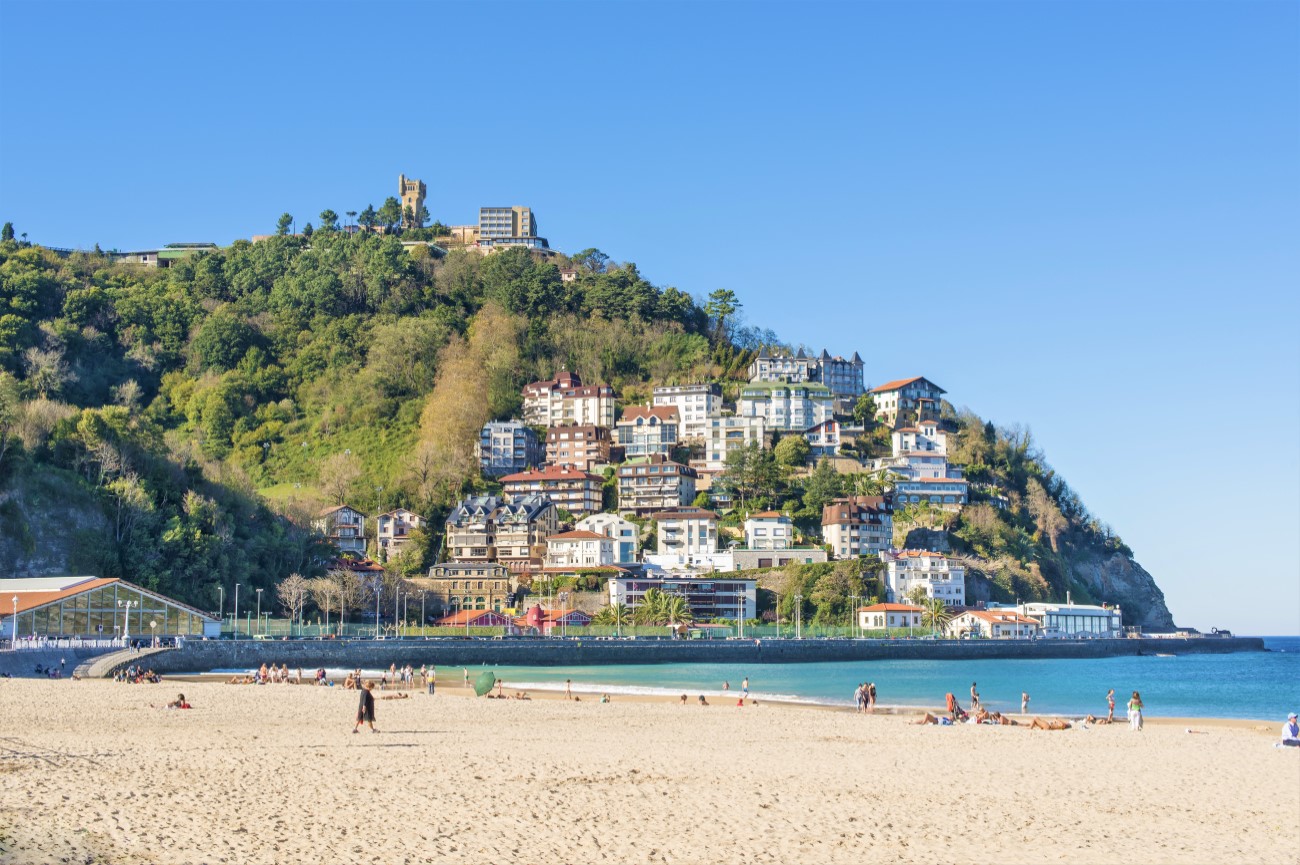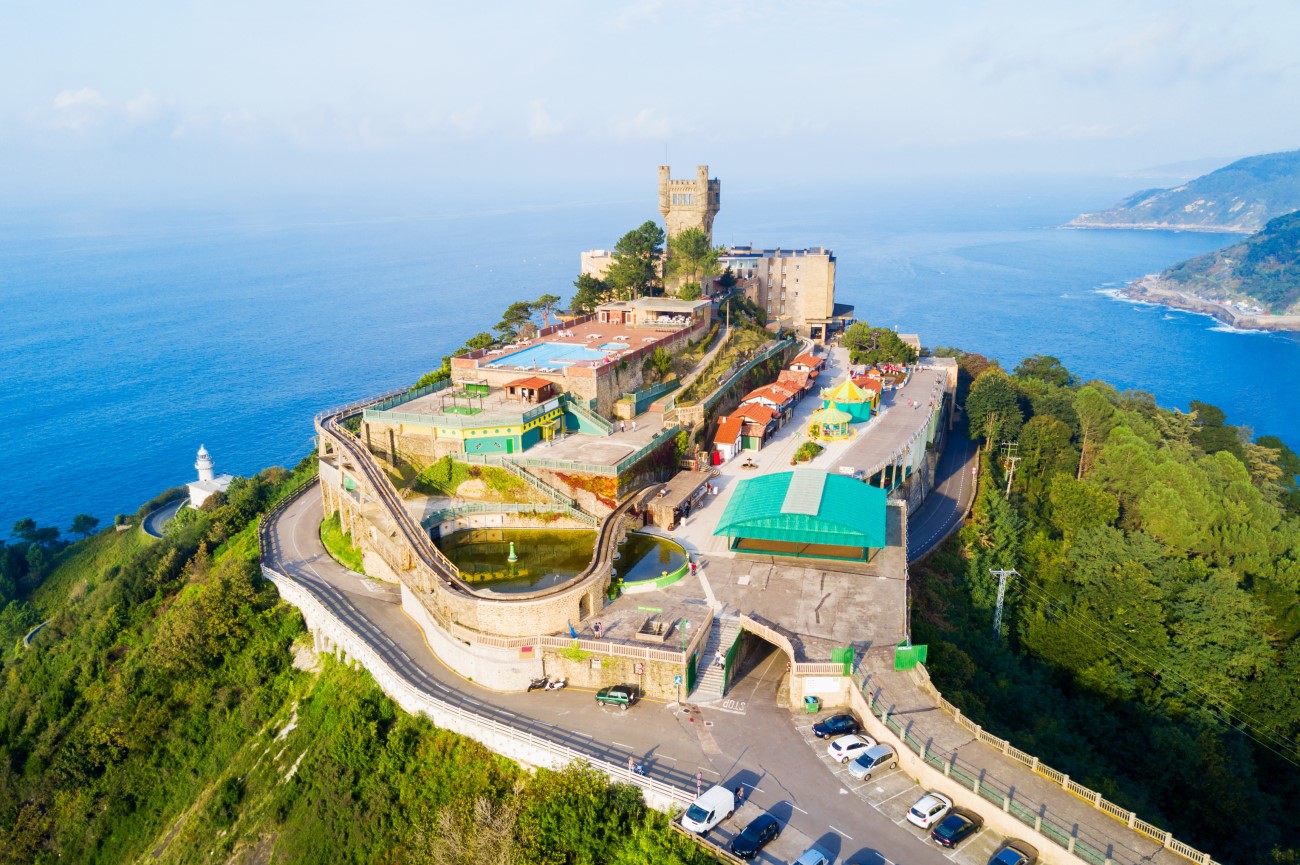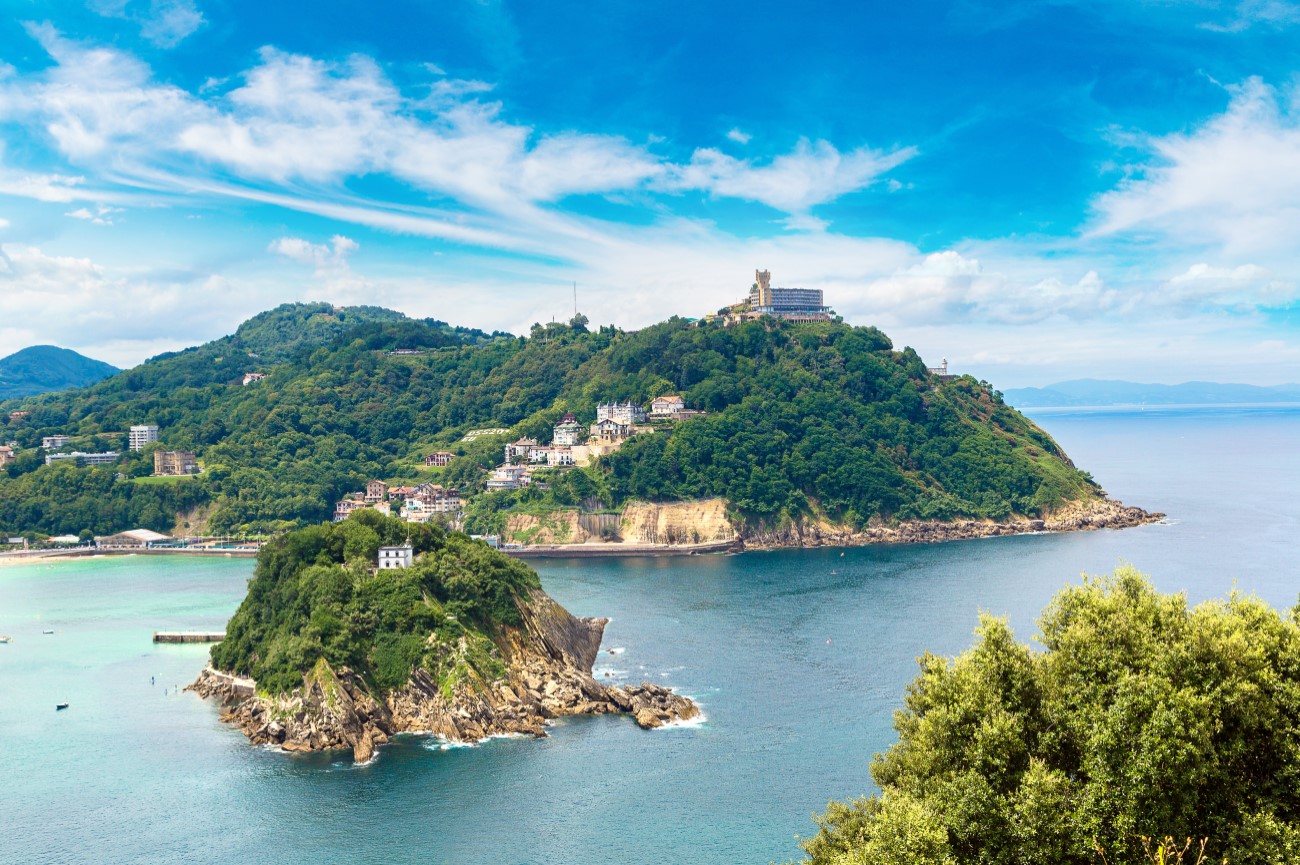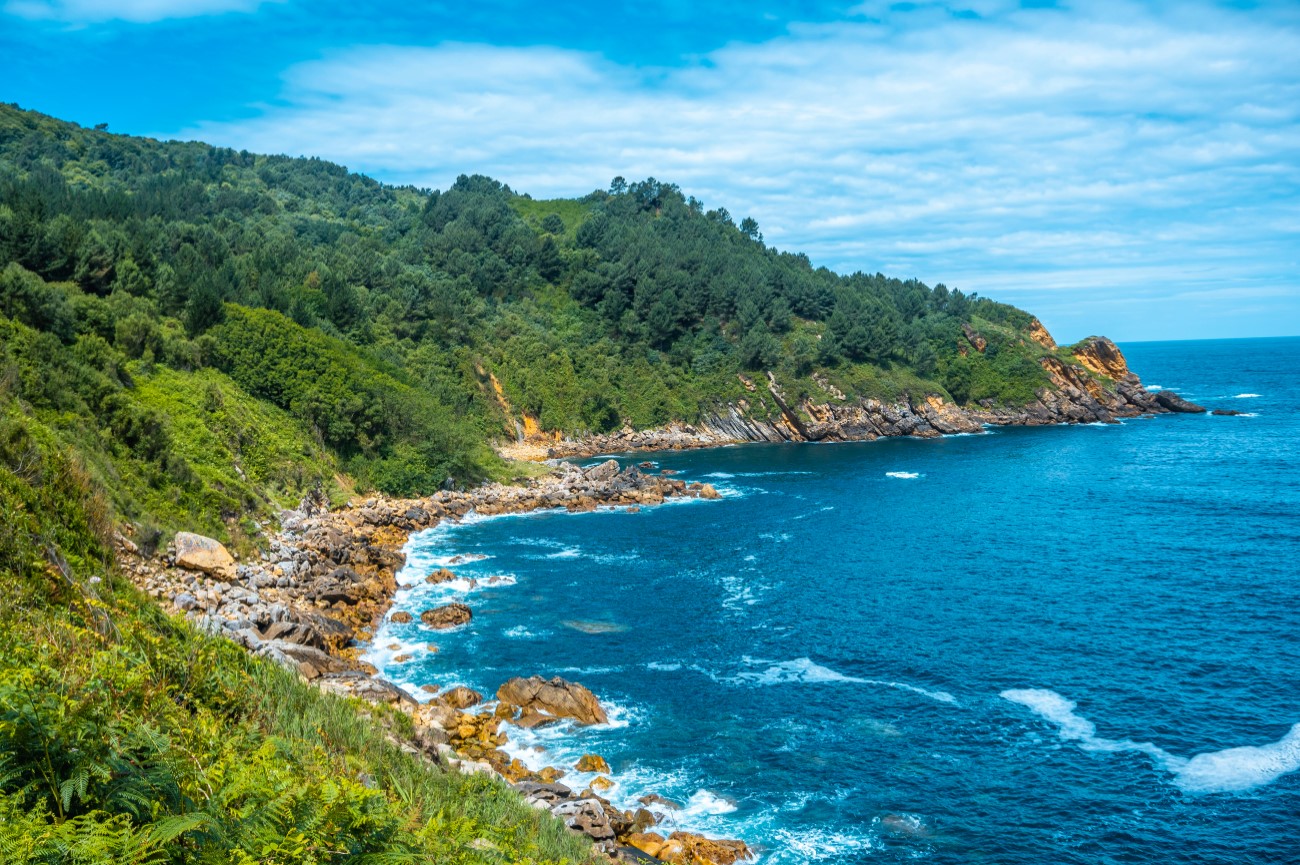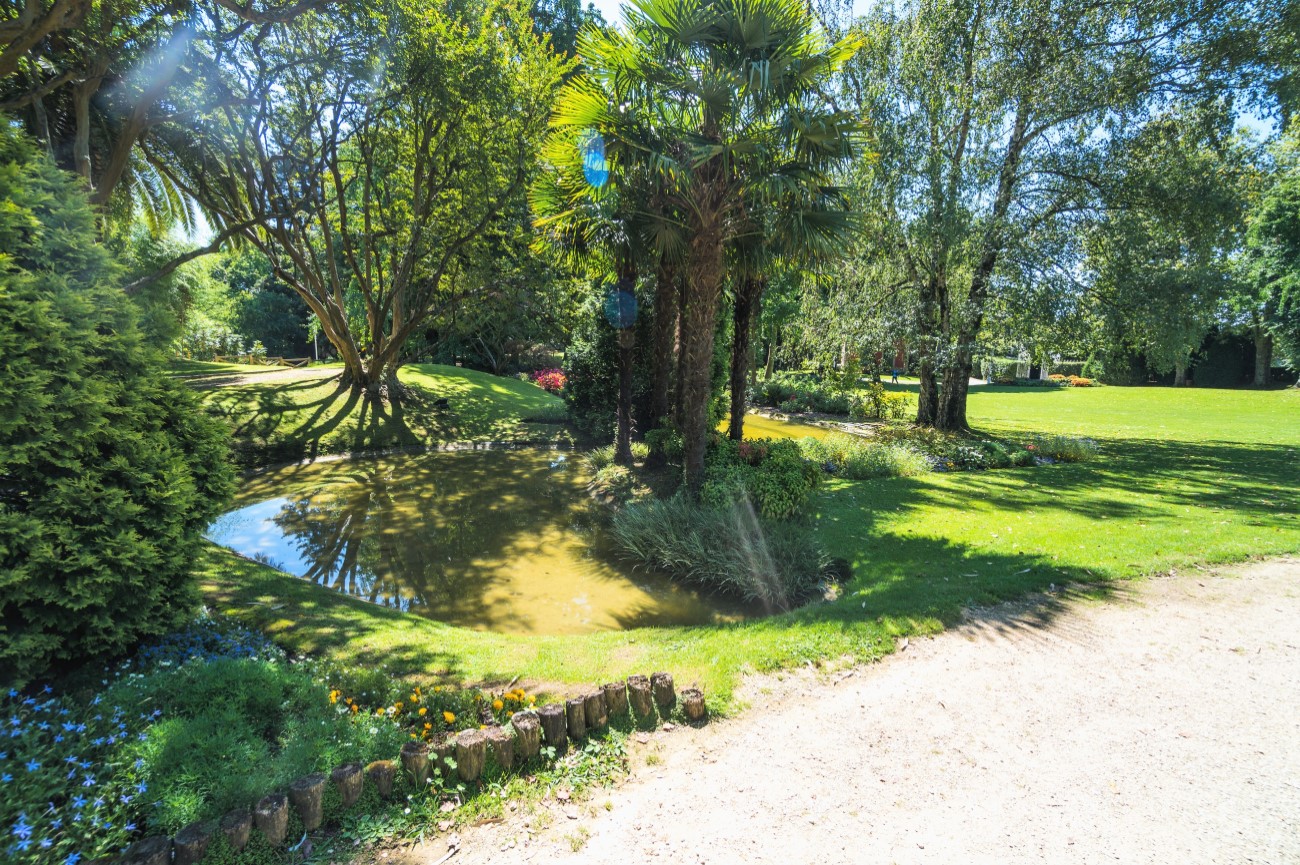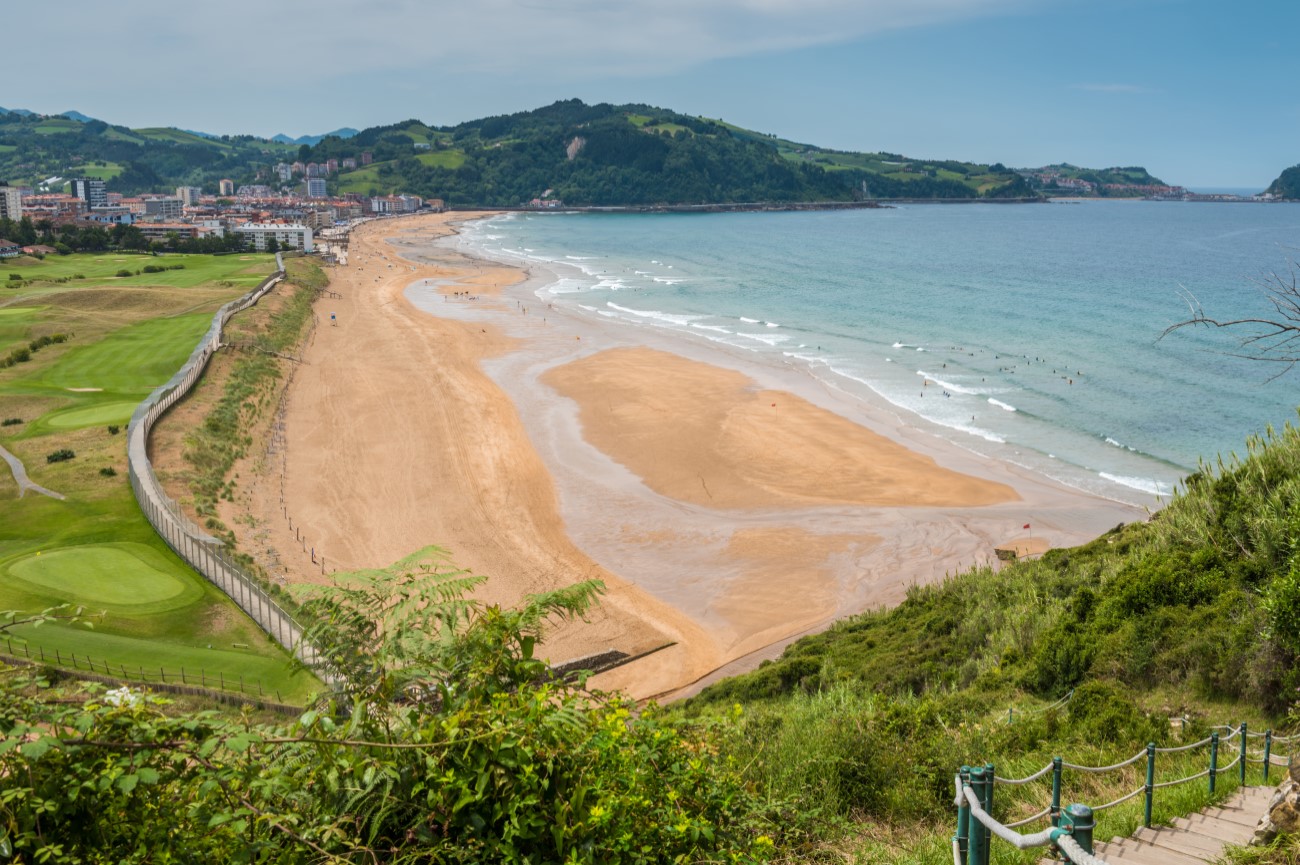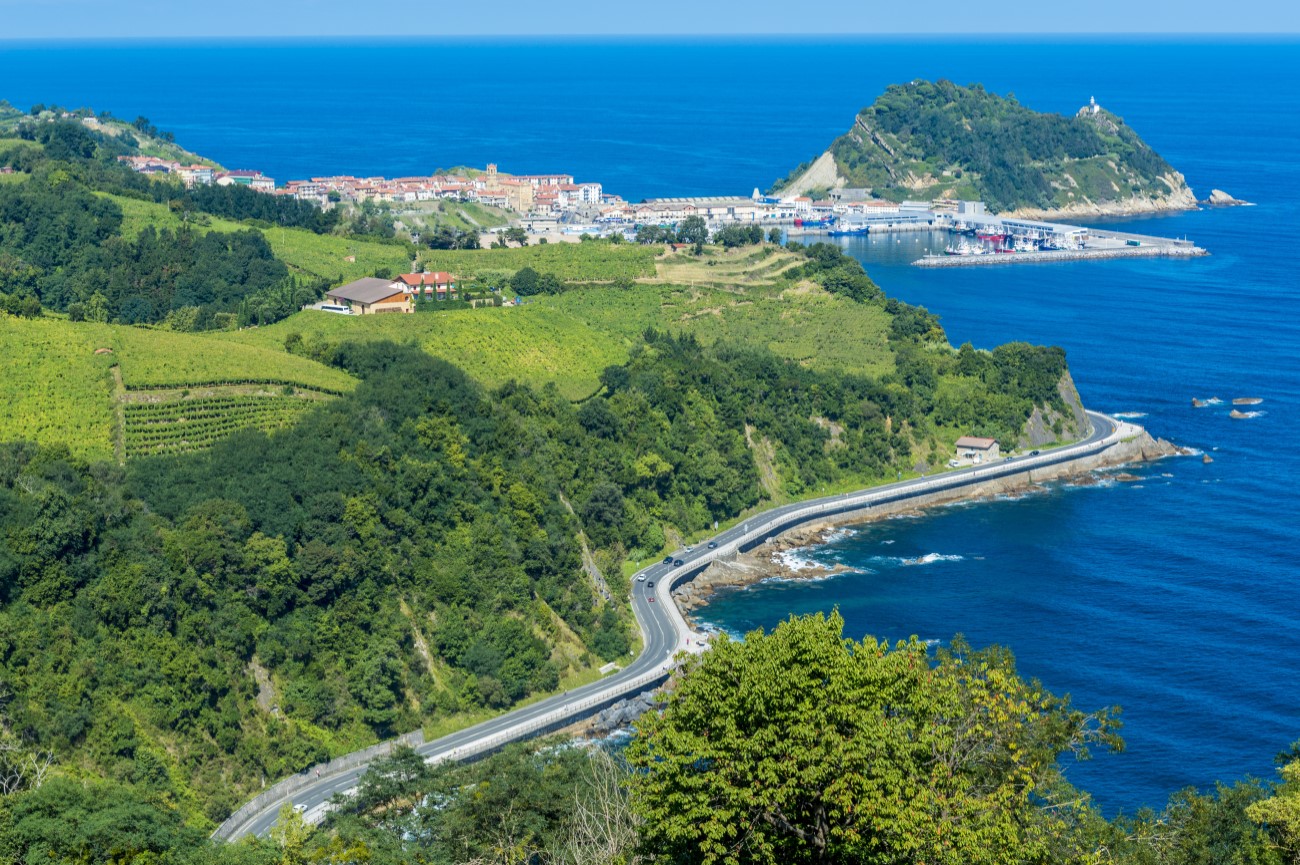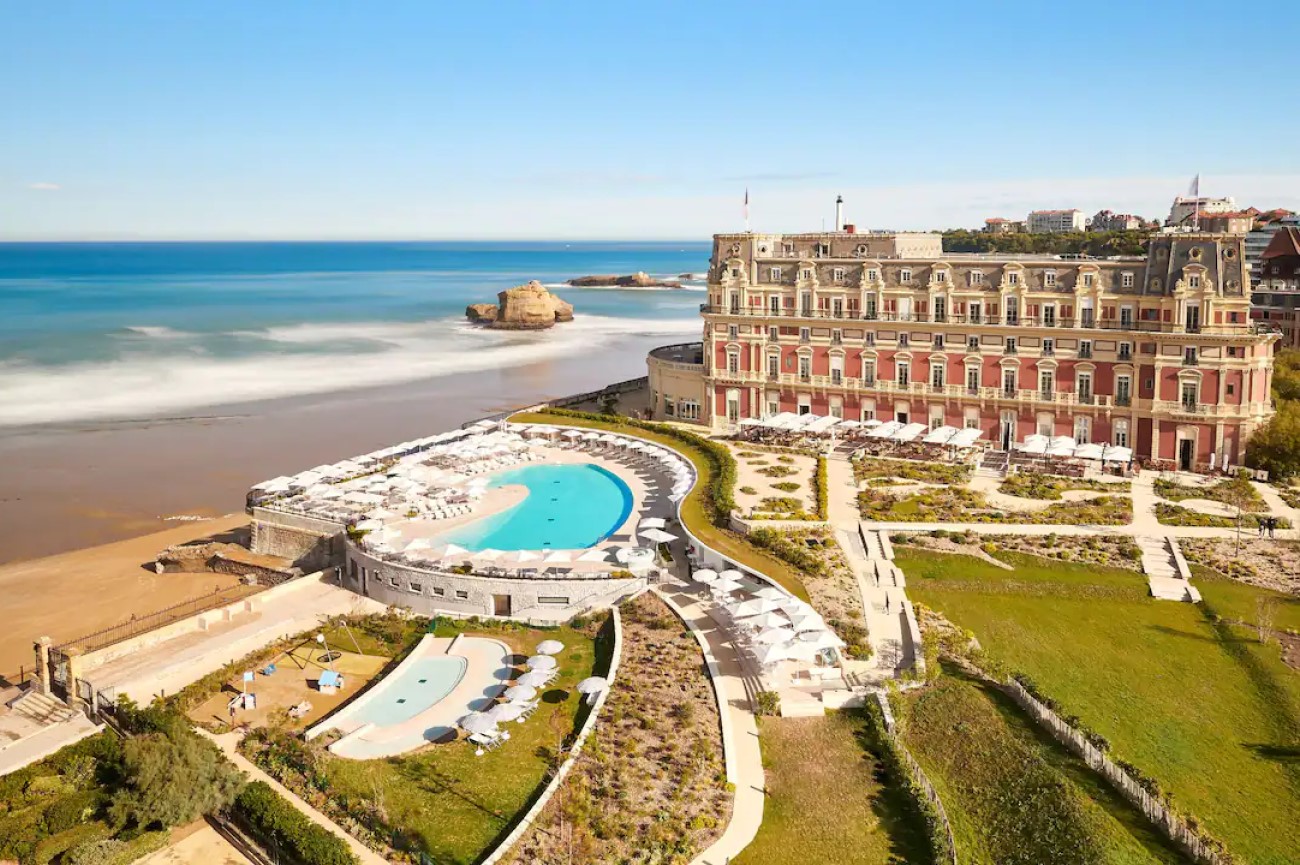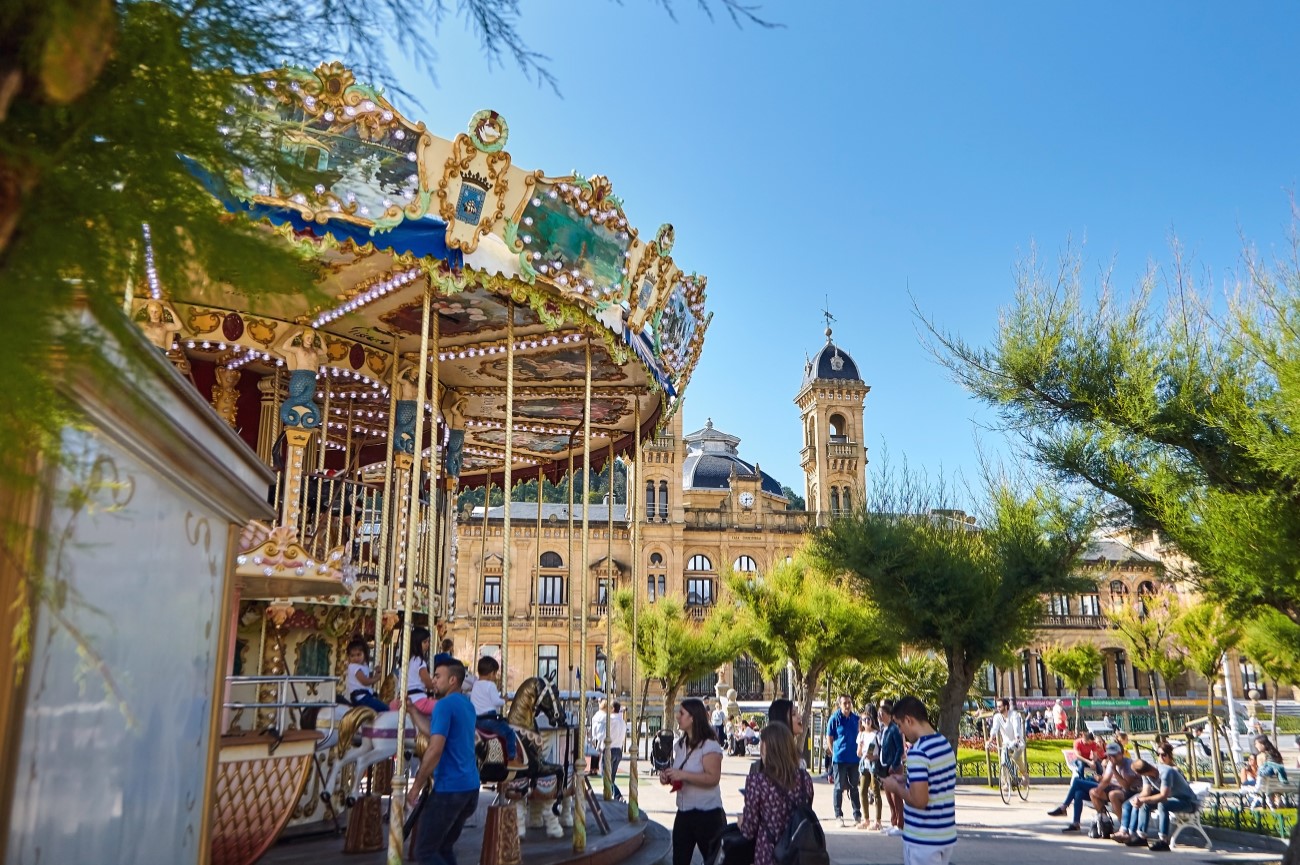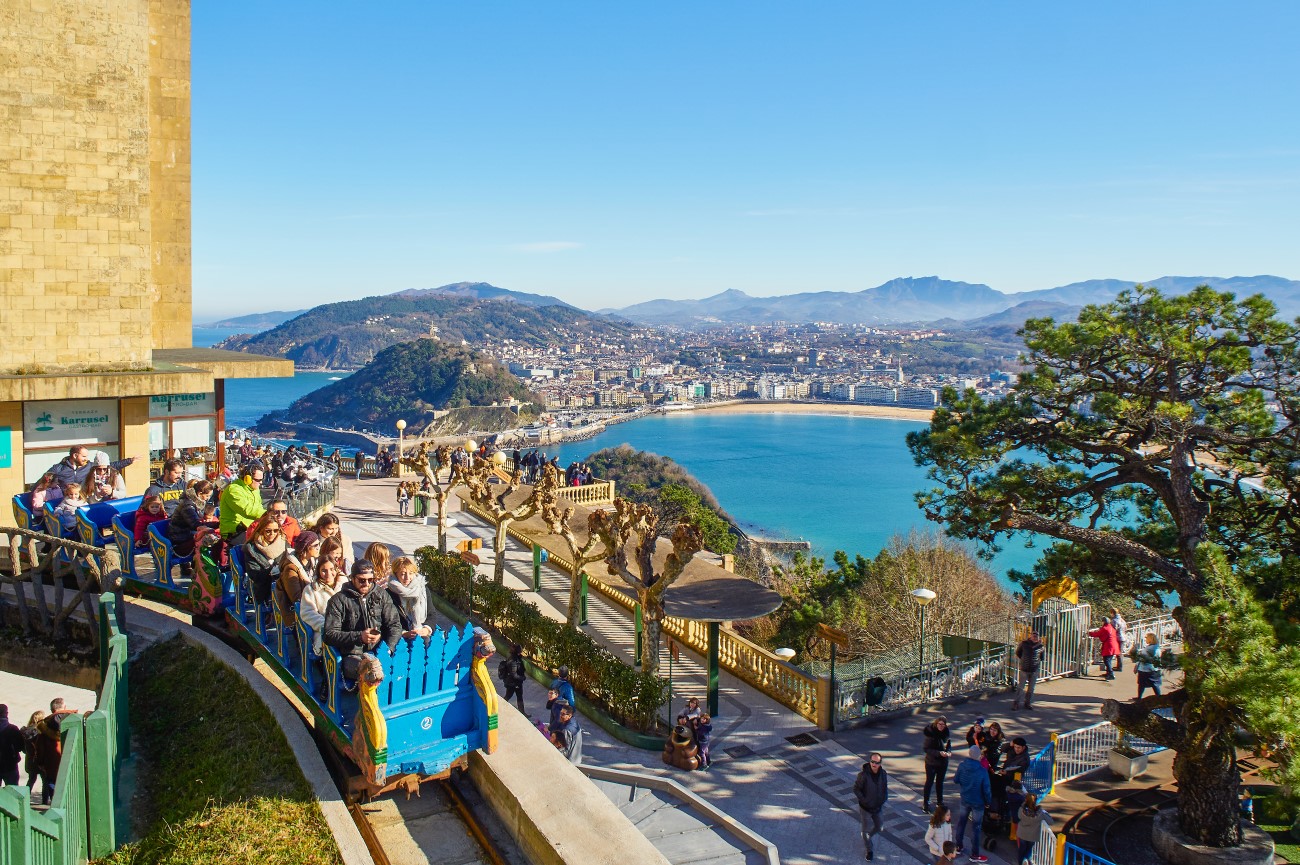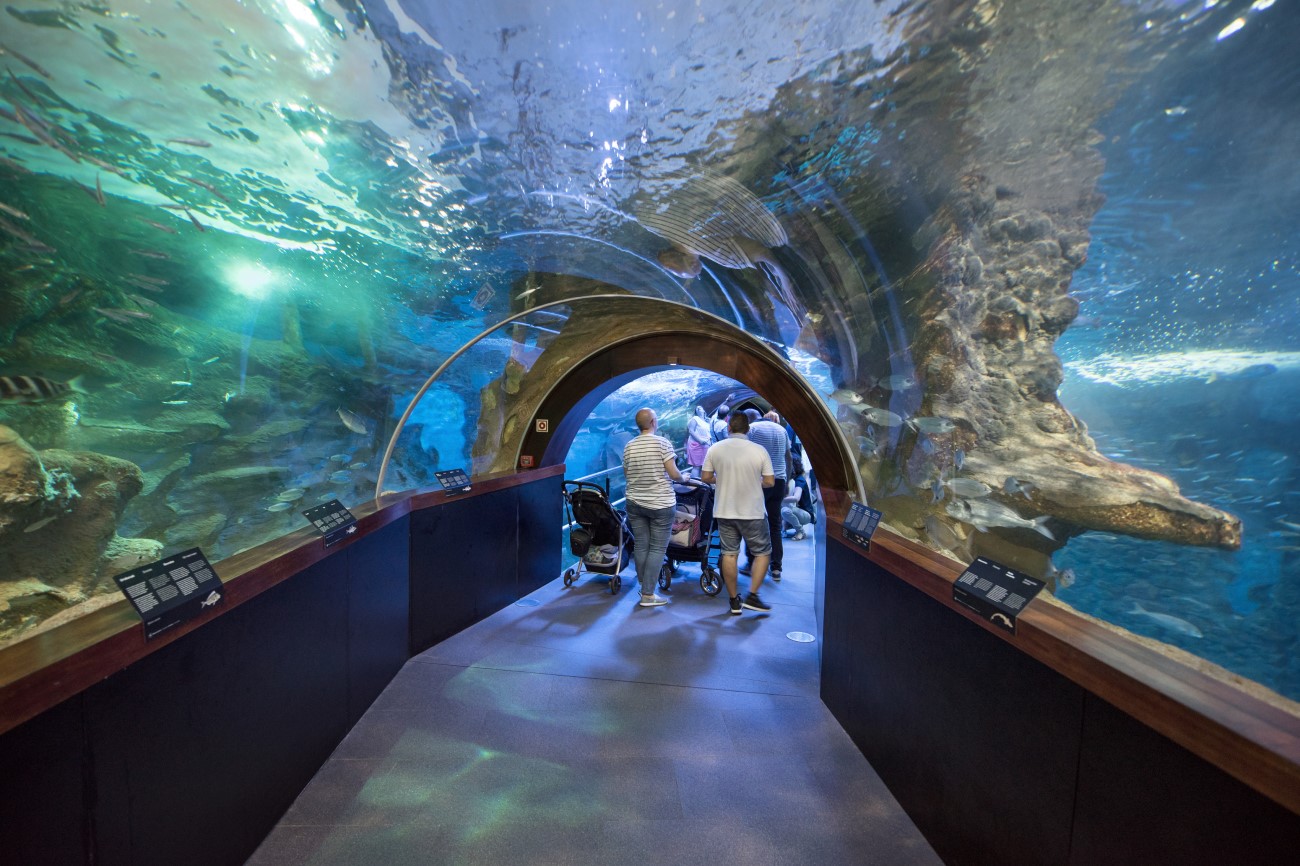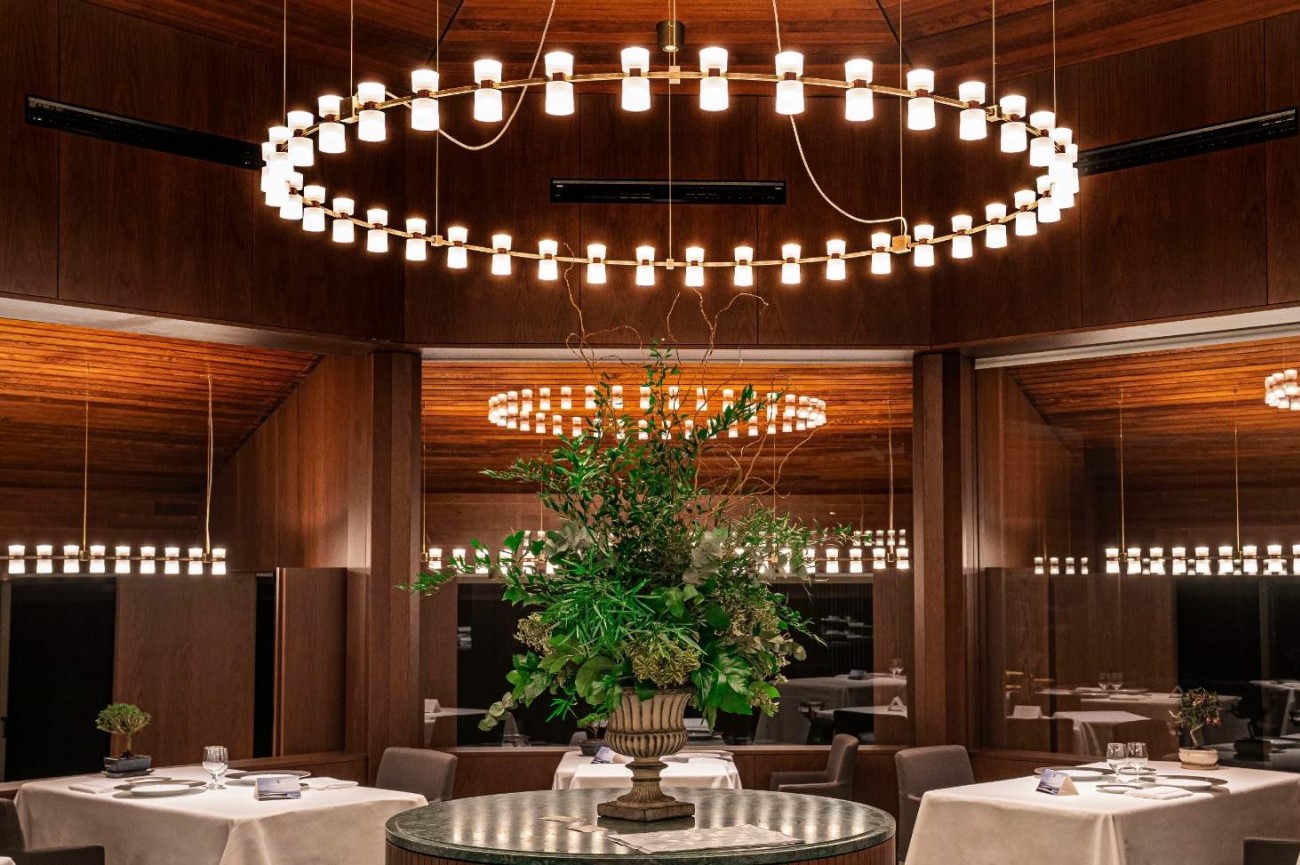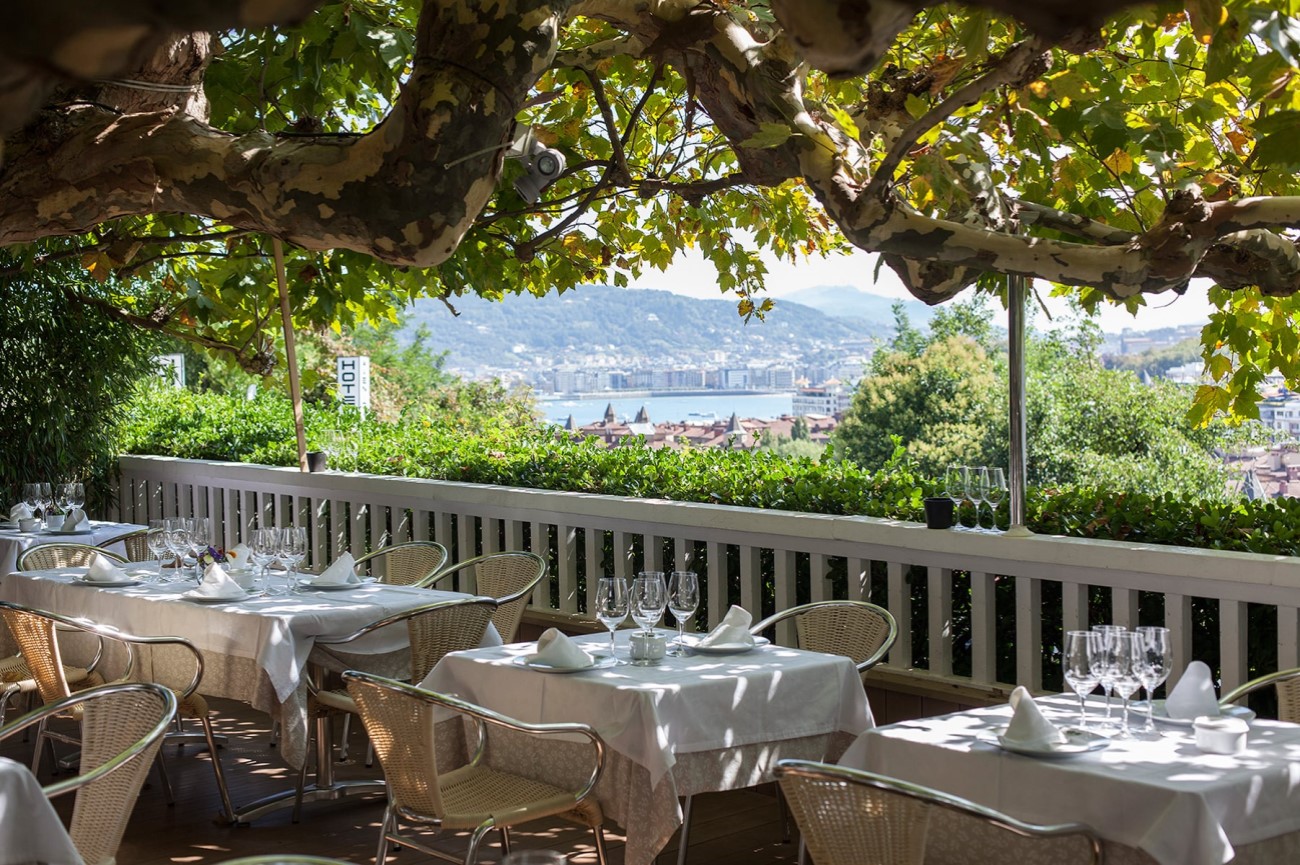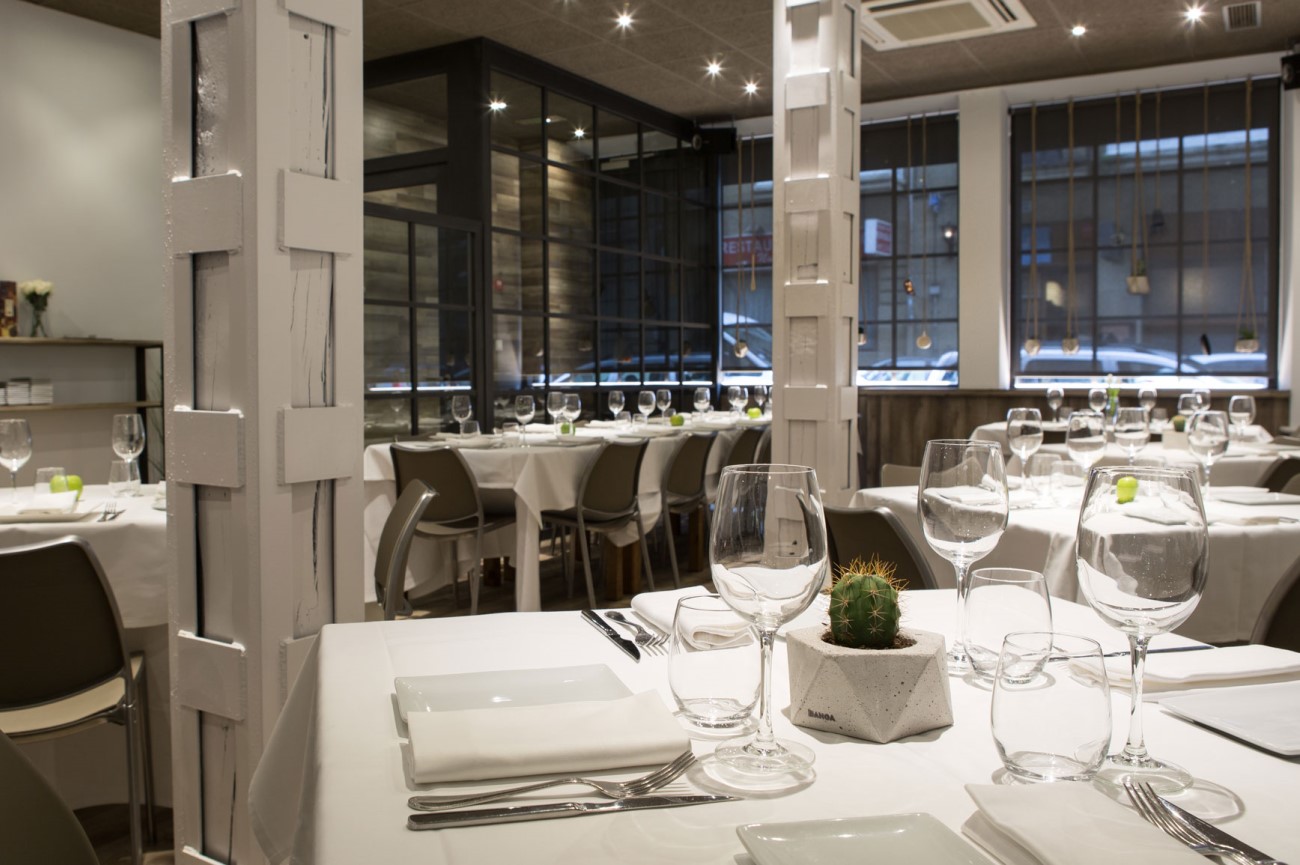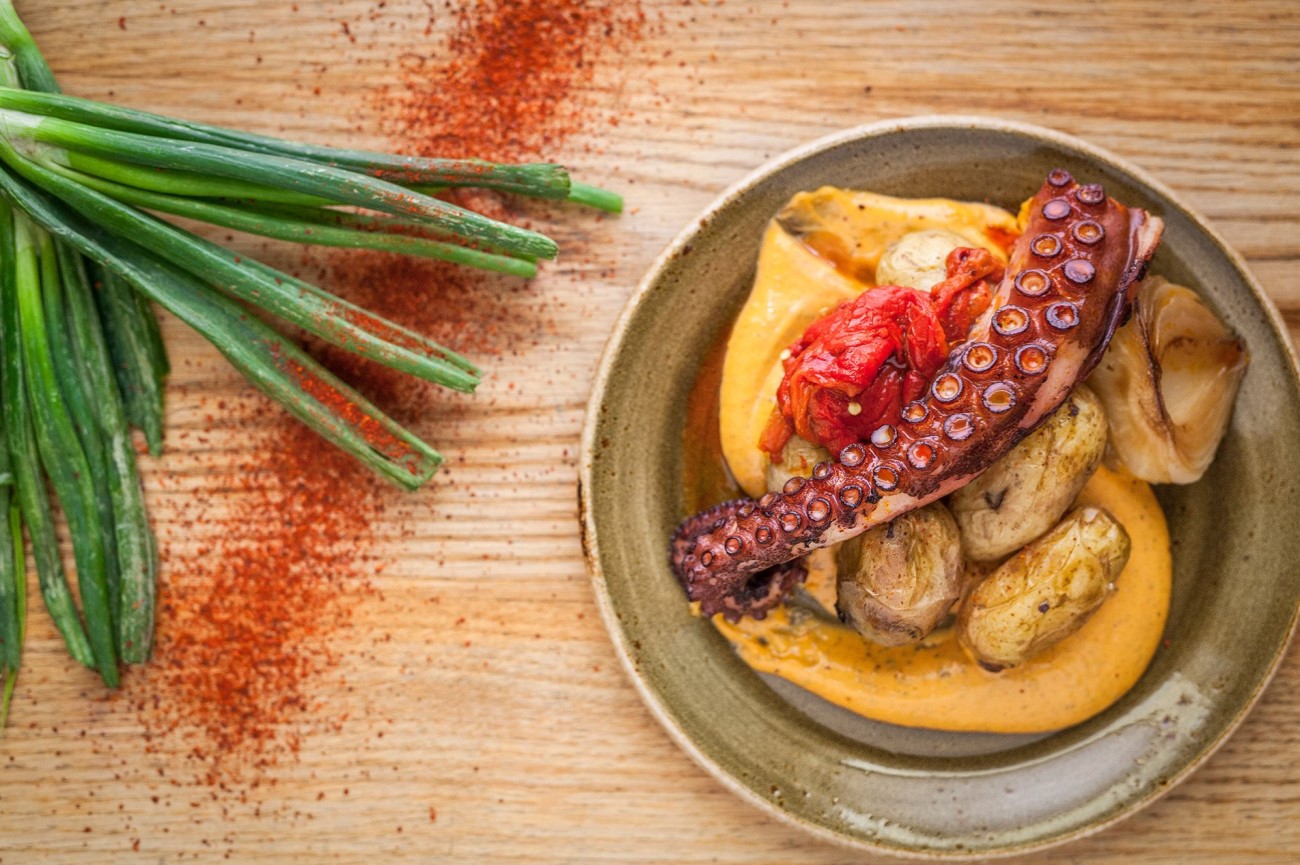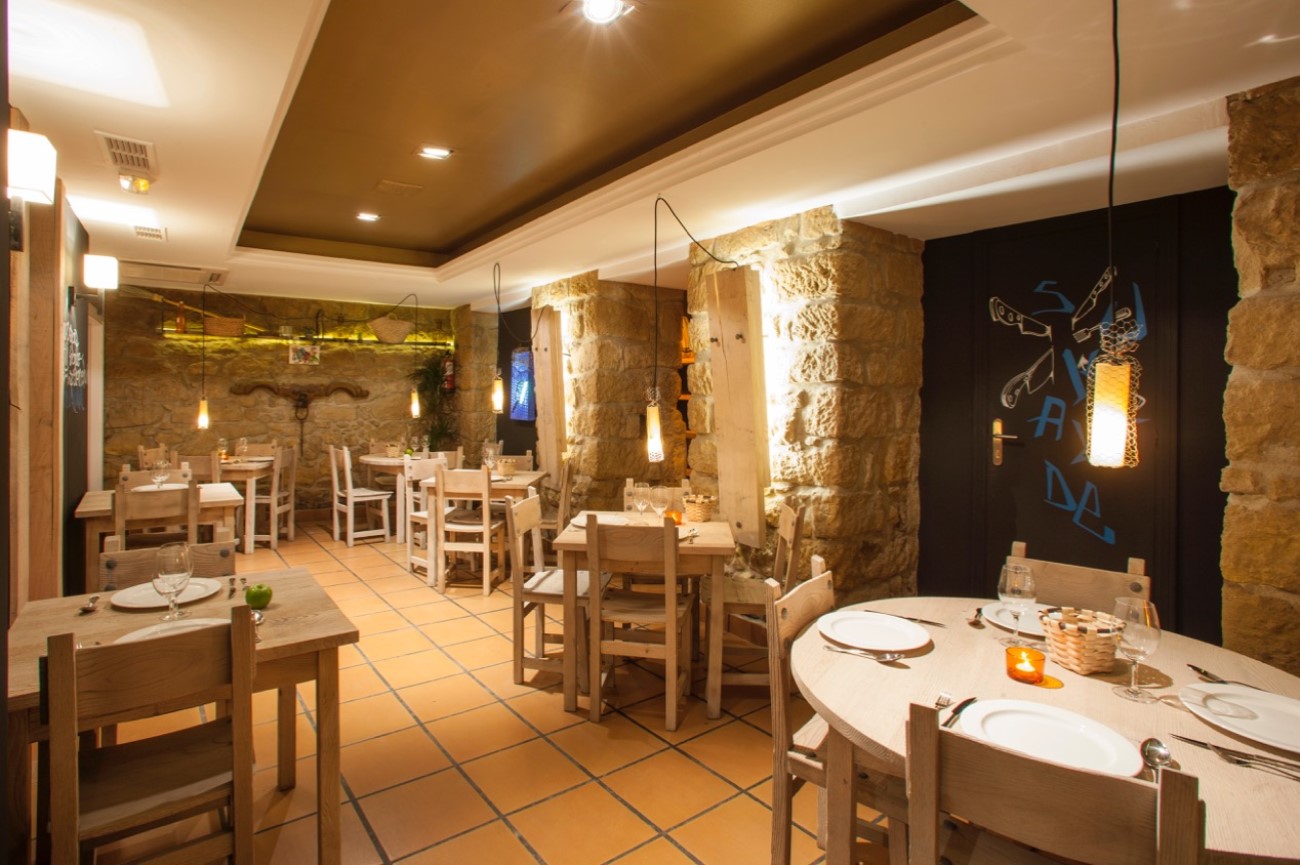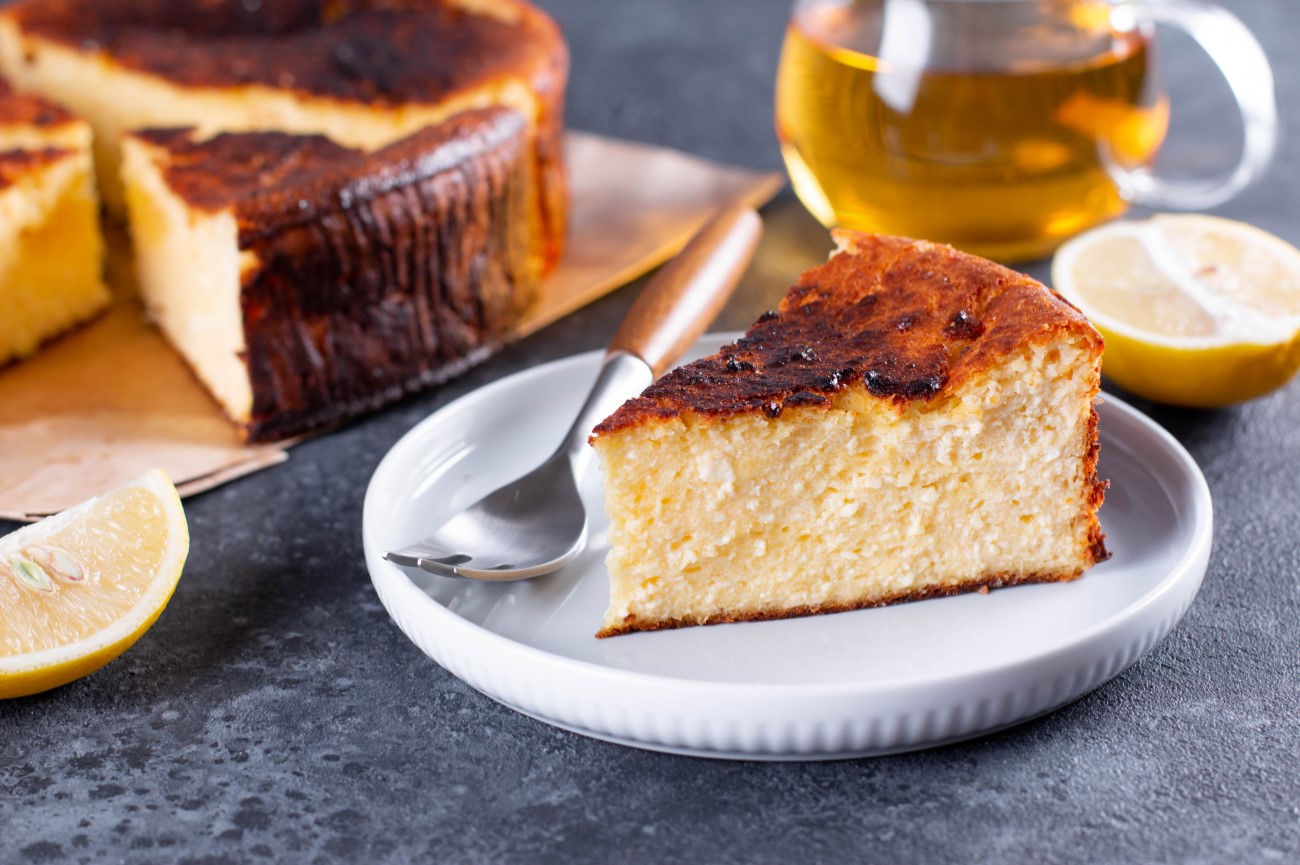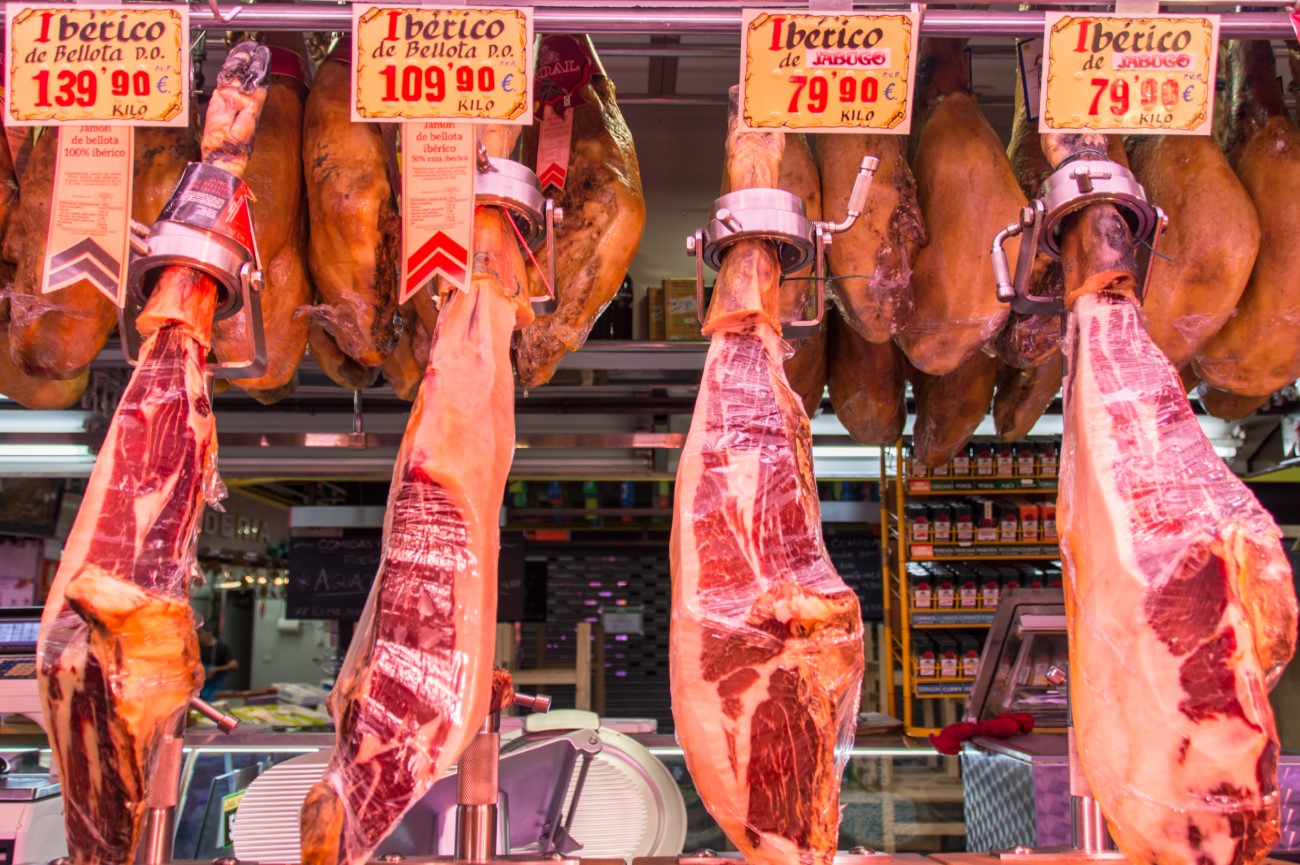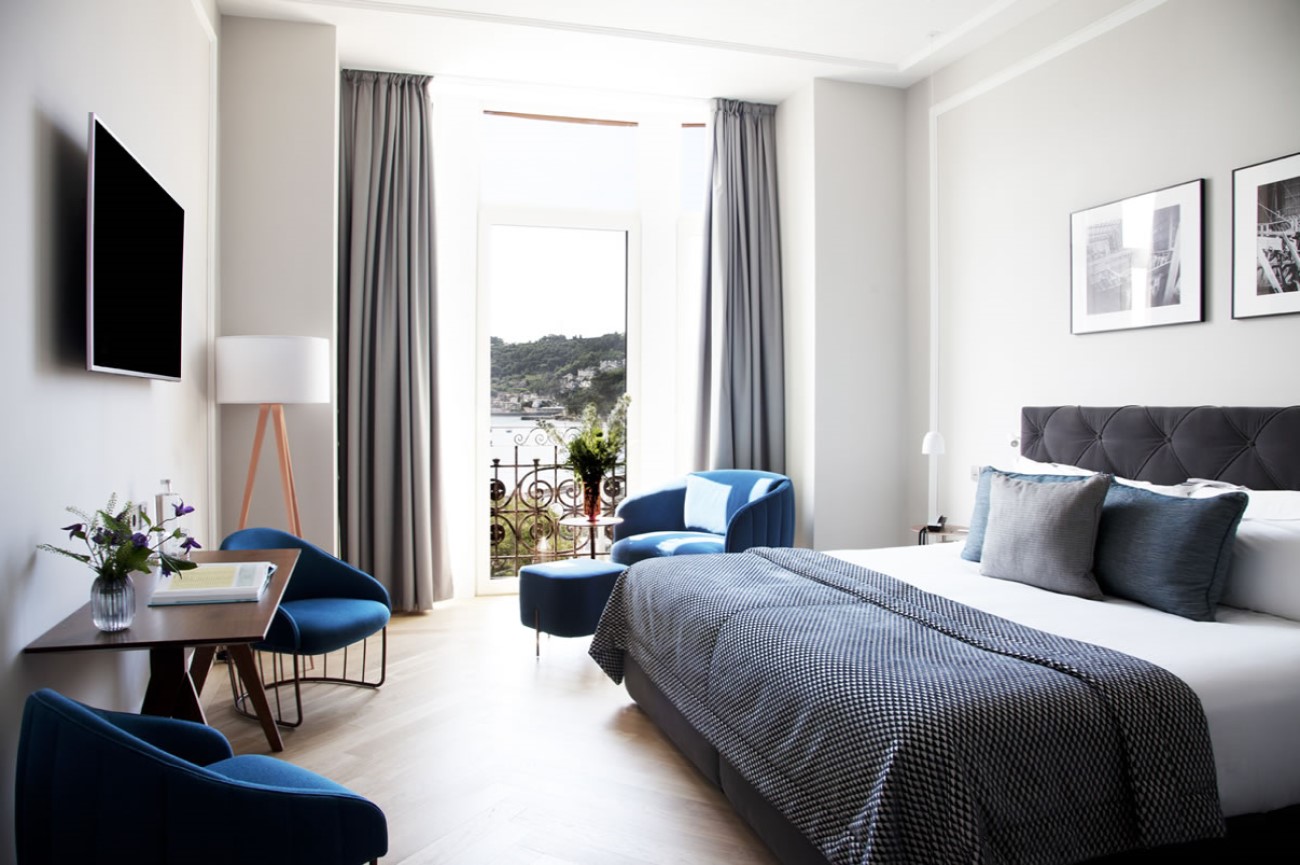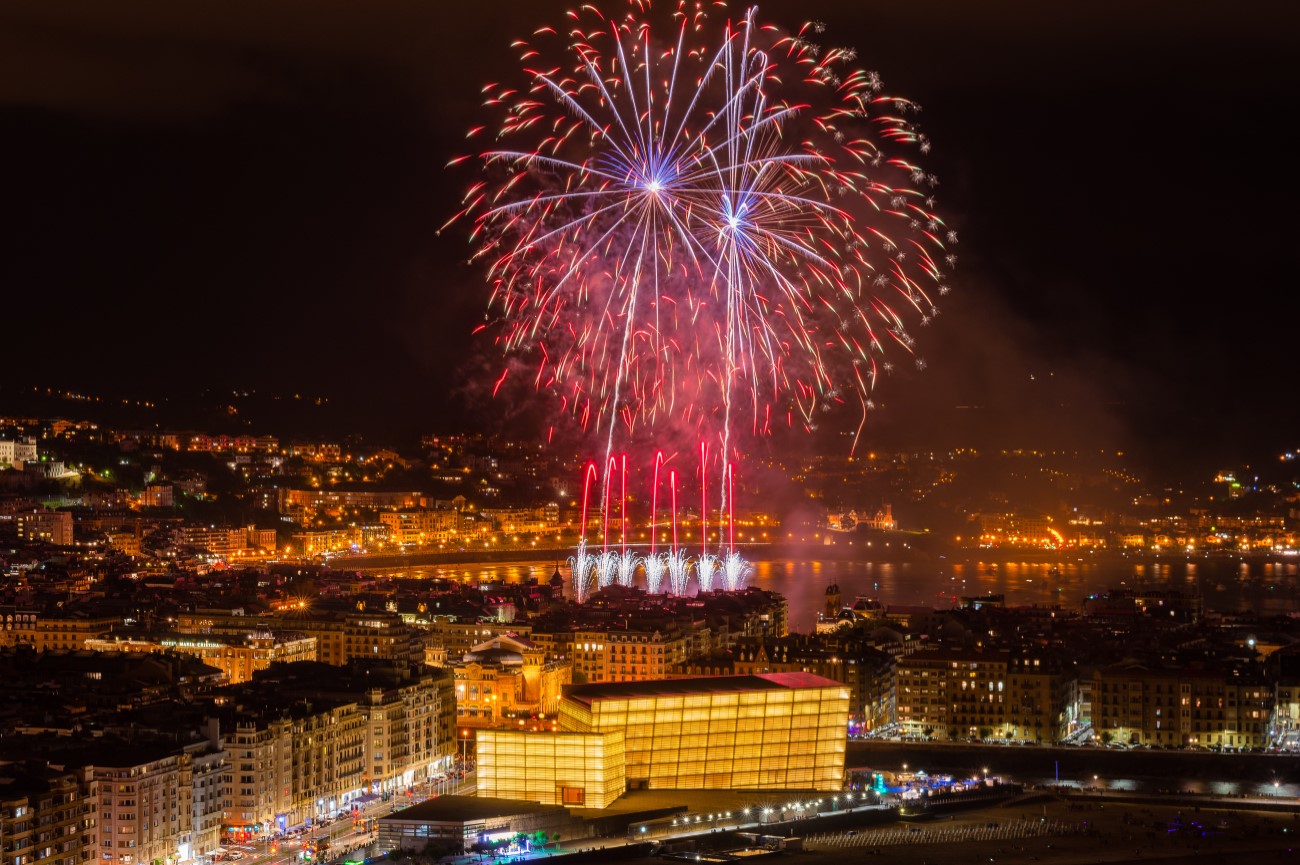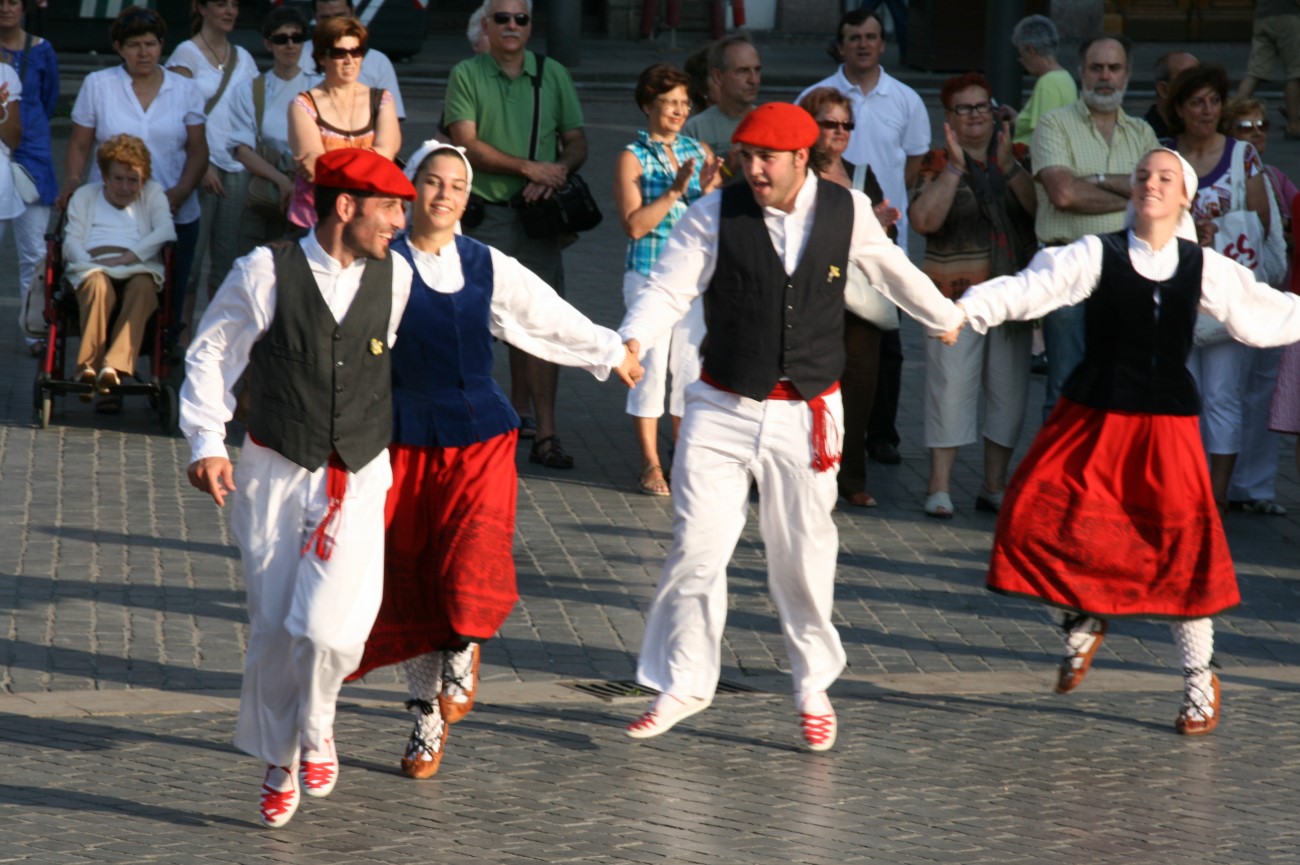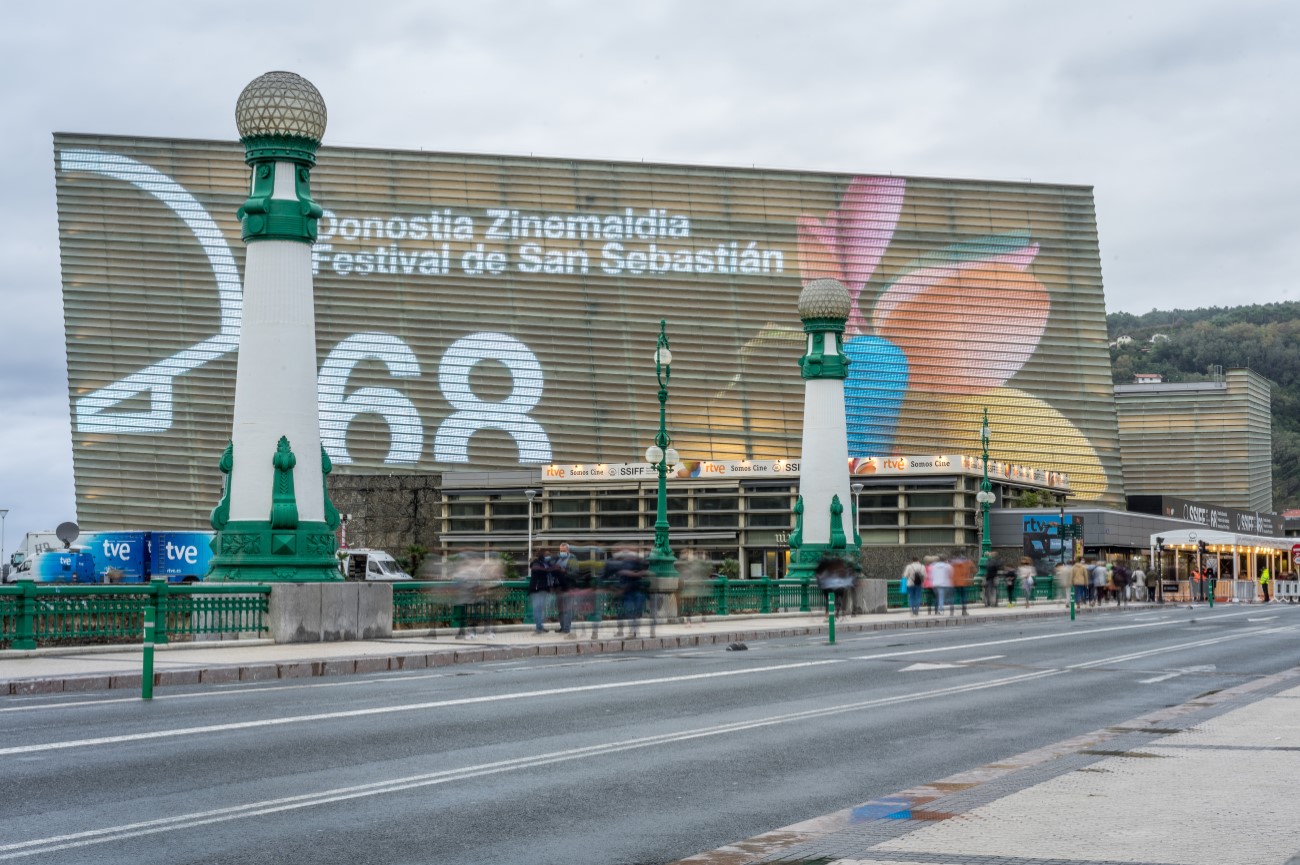Things to do in San Sebastián, Spain: 2-day itinerary
Crystal clear waters and golden beaches draw visitors to San Sebastián, also known as Donostia.
Framed by lush hills, this coastal Basque city was once a summer getaway for Spanish royalty.
Beyond its natural landscape, San Sebastián is a world-renowned culinary hot spot where pintxo bars and Michelin-star restaurants stand side by side. Booking ahead is essential if you want to grab a table at one of these high-end eateries. The city also offers plenty of cultural events and picturesque promenades lined with Belle Époque buildings.
This two-day itinerary will show you the best things to do in San Sebastián. It includes the top attractions, as well as recommendations of where to eat and where to stay, so you don’t miss a thing.
Day 1

Morning - Old Town
Sandwiched between the marina and the Urumea River, the old town is the best place to begin your tour of San Sebastián. Also known as Parte Vieja, it’s where you’ll find most of the city's iconic attractions, including the San Telmo Museum, the Iglesia de San Vicente and the Basílica de Santa María del Coro. Amid the historic buildings are also several pintxo bars and small boutique shops worth visiting.
Iglesia de San Vicente
Our first stop in the old town is the Iglesia de San Vicente, one of the oldest churches in San Sebastián. The building dates back to the 12th century, but it was rebuilt later on assuming its current Gothic look in the 16th century. It has a rectangular shape with striking bell towers that can be seen from afar. Inside, visitors can marvel at the vaulted ceilings, the stained-glass windows and the stunning golden altarpiece designed by sculptor Ambrosio de Bengoechea.
Mercado de la Bretxa
A few steps from the church is the Mercado de la Bretxa. Established in 1870, this century-old market houses a variety of food stalls, including butchers and fishmongers. Local chefs come here to purchase fresh ingredients, so you might spot one here stocking up for their Michelin-star restaurant. Still, anyone is welcome to visit the market and sample the food. Some treats worth trying include the jamón and the Idiazabal, a delicious sheep cheese. Besides the food section, the market has another floor lined with retail shops, added more recently.
Victoria Eugenia Theater
Even if you’re not attending a show, it’s worth passing through the Victoria Eugenia Theatre. Established in 1912 and refurbished later on, this local theatre still attracts visitors with its Belle Époque façade. A stone staircase leads the way to the main hall, where you’ll find a stunning frescoed ceiling. The theatre hosts several events throughout the year including the San Sebastián film festival and the Musical Fortnight, one of the longest standing classical music festivals in Spain. Make sure to check the agenda before you go.
Calle Fermin Calbeton and Calle Mayor
If you didn’t grab a snack at the Mercado de la Bretxa, here’s another food stop. These two streets, Calle Fermin Calbeton and Calle Mayor make up the heart of San Sebastián’s culinary scene. There are a variety of bars here offering pintxos (Basque-style tapas) and pouring local cider.
Plaza de la Constitución
Plaza de la Constitución is among the most imposing squares in the Basque Country. Established in 1813, it was initially used as a bullring, with the balconies serving as seats for spectators. Look up and you’ll still see the numbers used for renting the space. These days, the square is a charming meeting spot full of lively bars and shops. Dominating it is the old city hall, which now houses a public library. The bulls are long gone, but there are still many events that take place here including the Santo Tomás Fair. Sit down for a glass of wine before continuing the walk to the basilica.
Basílica de Santa María del Coro
The Basílica de Santa María del Coro is perhaps the most impressive building in San Sebastián. It combines a mix of styles including Gothic, Neo-classical and Plateresque. Completed in 1774, the church features an elaborate façade with a sculpture of Saint Sebastian. Inside, there’s an altarpiece built in honour of Our Lady of the Choir, the city’s patron saint. Visit on the 14th of August, and you might catch the annual concert by the Orfeón Donostiarra choir.
Museo de San Telmo
Sitting just below the Urgull Mountain, the Museo de San Telmo is the oldest museum in the Basque country, open since 1902. Here visitors can learn more about the region’s history, with exhibits stretching from prehistory to the modern days. These are held between a restored 16th-century convent and a recent modern wing. The collection includes anything from historical artefacts to contemporary art pieces. Temporary exhibitions also take place throughout the year. Most labels are in Spanish or Basque, but there are free audio guides with other languages available.
Day 1, Morning - San Sebastián Tour Map
Afternoon - Monte Urgull (Castillo de la Mota)
From the museum, it’s a 20-minute walk up to Monte Urgull. Above it, you’ll find the Castillo de la Mota, with its low stone walls and a striking Christ statue sculpted by Federico Coullaut. Established in the 12th century, today it houses the Casa de la Historia, a small museum focusing on the history of San Sebastián and its cultural events. Objects on display include military uniforms, photographs, and small-scale city models. There’s another path to the castle from the aquarium, but whichever way you take, you’ll be rewarded with breathtaking views of the city. If you want to enjoy this scenery a bit longer, grab a drink at the Urgulleko Polboriña bar.
Ayuntamiento de San Sebastián
After exploring the mountains, head back down to the city centre. Take a walk towards the Alderdi Eder Gardens, stopping to admire the Ayuntamiento, aka the city hall. The building was completed in 1887 and remains one of San Sebastián’s architectural jewels. For a while, it was home to a casino, where local artists and politicians mingled during the Belle Époque. Later it was a battle scene when nationalists and republicans clashed during the Civil War. If you look closely, you can still see bullet holes in the façade. It was only in 1947 that it became the city hall’s headquarters where it remains. If you follow the promenade from here, you’ll eventually end up at the beach.
Puente de Maria Cristina
Take a little detour and head to the Puente de Maria Cristina. Several bridges cross the Urumea river, but this one stands out with its Belle Époque design. Erected in 1904, it features two golden statues on each end standing on a white pedestal. Architect Julio Martínez-Zapata and engineer José Eugenio Ribera were behind this project completed in only nine months. The bridge links the city centre with the San Sebastián railway station and the bus terminal.
La Catedral del Buen Pastor
Close to the bridge in the new town is the city’s cathedral, the Catedral del Buen Pastor. Established in 1897, it combines slate and stone quarried from the nearby Monte Igueldo. Architect Manuel Echave designed the church in a Neo-Gothic style inspired by French churches and medieval German. Its 75-metre bell tower has become an iconic sight in San Sebastián, seen from every angle. The cathedral is also home to one of the biggest organs in Europe with over 10,000 whistles. Other elements worth admiring include the gargoyles, the stained glass windows and the “The Cross of Peace” sculpture on the façade. Adjoining the cathedral is the Koldo Mitxelena Kulturunea, a cultural centre that hosts art exhibits and other events throughout the year.
Playa de la Concha
Before the day comes to an end, take a stroll down to Playa de la Concha to enjoy the sunset. Considered one of the best beaches in Spain, it’s the ideal spot to relax after touring the city. Spanish royalty used to escape to San Sebastián and Queen Regent Maria Cristina even declared the city the summer capital of Europe. Behind the beach is a lovely promenade that leads all the way to the Pico del Loro headland.
Michelin-star dinner
San Sebastián is packed with Michelin-star restaurants, so why not end the day with a meal in one of these fine dining spots. The closest ones to the centre are Kokotxa and Amelia, but there are many more further out. There are places with one, two and even at the high-end with three Michelin stars.
Whichever one you choose, make sure to book as far ahead as you can. Here is the full list of Michelin-star restaurants in San Sebastián.
Day 1, Afternoon - San Sebastián Tour Map
Day 2

Morning: Parque de Cristina Enea
Take it easy on your second day in San Sebastián by exploring some of the city’s natural wonders. First stop is the Parque de Cristina Enea, also known as Kristinaenea. The Duke of Mandas designed this riverside park for his wife Cristina, hence the name. Since then it’s become the perfect spot to escape the city bustle. Stretching for 95,000 square meters it’s home to ducks and peacocks and scenic pathways facing the Urumea river. The lush trails include anything from fig trees to red sequoias and ginkgo trees. In the middle of the park stands the Fundación Cristina Enea Fundazioa with its striking red façade.
Playa de la Zurriola
From the park, head north and you’ll soon end up at Playa de la Zurriola or “Zurri” as locals call it. This 800-metre beach is famous for its surf scene, attracting surfers from all over the globe. If you fancy trying it yourself, you can join one of the daily surf classes run by Pukas Surf Eskola. There are also other sports areas for volleyball and football. On the eastern edge of the beach is the Muro de Sagües, one of the best spots to watch the sunset in San Sebastián.
Paseo de la Concha
Continue your walk along the waterfront, towards the Paseo de la Concha. This charming promenade begins at Avenida de la Libertad and goes all the way to the tunnel of El Antiguo. Enjoy a relaxing stroll here or rent a bike and follow the lane whilst watching the view of the bay and the Santa Clara Island in the distance. You can also take the opportunity to visit the La Perla thermal springs located on the beach.
Palacio Miramar
Palacio Miramar is a stunning 19th-century palace with a privileged location above the beaches of San Sebastián. When the royal family was in town, this was their summer getaway spot. It has the style of an English cottage with striking red brick walls and terracotta ceilings surrounded by a grassy field. The palace is closed to the public, but it’s still worth admiring it from the outside. Visitors are also welcome to stroll through the gardens and enjoy the sea views.
Afternoon: Playa de Ondarreta
Playa de Ondarreta is another beach worth visiting in San Sebastián. It’s located right below the Miramar Palace and just in front of Santa Clara Island. The royal family used to swim here and even today it remains a favourite spot among wealthy residents and visitors. Picturesque blue-and-white umbrellas line the beach, but you can also bring your own. Wherever you stand, you can enjoy the views of the Monte Igueldo sheltering the beach.
Peine del Viento Sculpture
Close to the Ondarreta beach, you’ll find the Peine del Viento. Translated as the Comb of the Wind, this giant sculptural work was installed in 1977 and has since become a symbol of the city. The project was a collaboration between the architect Luis Peña Ganchegui and the renowned Basque sculptor Eduardo Chillida. If the sea is rough, you’ll hear some impressive sounds as the waves crash into the anchor-like iron pipes attached to the rocks.
Monte Igueldo
The last stop of the day is the Monte Igueldo. Standing more than 100 metres high, the best way to reach this mountain is by hopping on the funicular. The bright red car has been whisking visitors up the hill since 1912. Once on top, visitors can enjoy the views over the city’s coastline. For even better views, you can climb the El Torréon tower for a small fee. Kids will also love the Parque de Atracciones, a small theme park with a variety of attractions like bumper cars and carousels.
Day 2 - San Sebastián Tour Map
Other Things to See in San Sebastián
- Santa Clara Island: If you’re visiting San Sebastián in the summer, it’s worth taking a ferry down to the Santa Clara island, located just a few miles from the Playa de la Concha. Between May and August, there are trips to Santa Clara every half-hour departing from the city’s fishing port. You can also choose the glass-bottom boats, which run every hour. Bring a snack and enjoy the views from the island’s lighthouse. There’s also a small beach that forms during low tide.
- Monte Ulia: Rising on the east of San Sebastián is the Monte Ulia, at 243 metres high. You can hike here from Calle San Francisco, near Playa de la Zurriola, which takes about one hour. If you’re up for it, continue all the way to the village of Pasaia.
- Parque de Aiete: Stretching over 70,000 square metres, the Aiete Park features many attractions, including a Bonsai pavilion, a bar, a restaurant and a children’s playground. In the middle of the park stands the Palacio de Aiete, a former Royal palace built in 1878. Many Spanish queens have set foot here, as well as English queens like Queen Elizabeth. Later on it served as a summer residence for General Francisco Franco. Today the palace functions as a cultural centre that is open to all.
Day Trips From San Sebastián
- Zarautz: If the beaches of San Sebastián aren’t enough for you, head down to the coastal town of Zarautz. Here you’ll find a 2.5km golden beach and plenty of surf schools. Visitors can also explore the town’s medieval streets and visit historic monuments like the Parroquia De Santa María La Real. On the outskirts of Zarautz are several wineries where you can sample Txakoli, a white wine that is typical of this region.
- Hondarribia: Less than half an hour away from San Sebastián and facing the French estuary is the picturesque village of Hondarribia. Beyond the beach, it’s the town’s fishermen houses that attract visitors with their colourful balconies and window shutters. Other highlights include the Plaza de Gipuzkoa and the Gothic Iglesia de Santa María de la Asunción. You can drive here or catch the E21 bus run by Ekialdebus.
- Getaria: Getaria is a small fishing village located 30km west from San Sebastián. It has a small harbour and a sheltered beach ideal for families. In the summer locals set up grills outside with their fresh catch. Getaria is also the birthplace of Juan Sebastián Elcano, a Spanish sailor that travelled with Magellan on his world sailing trip.
- Bilbao: If you have a bit more time, you can take a day trip to Bilbao, which is about an hour away by train. This Basque city is renowned for its iconic architecture. Beyond the Guggenheim, you should stop by the train station to admire its Art Nouveau façade or watch a play in the city’s Neo-baroque theatre.
- Biarritz (France): Head east from San Sebastián and you’ll soon hit the French border. Only 40 minutes away from the Spanish city, Biarritz offers a different atmosphere. This was where Napoléon III and his wife used to spend their summers back in the 19th century. The elegant mansions around the town still recall these past glamour days. Since then Biarritz has become a popular surfing destination, with several schools offering classes for beginners. You can drive to Biarritz from San Sebastián or get the local bus.
Top Things to Do With Kids in San Sebastián
There are many things to do with kids in San Sebastián. You can spend the day relaxing by the beach or enjoy one of the many water activities available like surfing, kayaking and paddling. If visiting in the summer, why not hop on the boat to Isla de Santa Clara?
All-year-round, the city’s waterfront promenade provides the perfect opportunity for a family stroll or a bike ride. San Sebastián is also home to a series of kid-friendly museums like the Eureka Science Museum or the Albaola Sea Factory. The city’s parks are ideal for a sightseeing break and most of them have playgrounds.
Of course, you should embrace San Sebastián’s culinary traits too. Take the whole family for some pintxos or try delicious local pastries at Pastelería Oiartzun. Above the city’s mountains, you’ll find many other attractions like the Castillo de la Mota, the theme park at Monte Igueldo (plus the fun funicular ride) and the aquarium at Monte Ulia. Further out is Ekogunea, where kids can learn more about ecological practices.
Where to Eat in San Sebastián
When it comes to the North of Spain, there’s no better place to eat than San Sebastián. This city has the most Michelin-star restaurants than any other Spanish city. Alongside these high-end eateries, you’ll also find humble pintxo bars, where you can sample a variety of pintxos (Basque tapas).
With a privileged location by the sea, fresh fish and seafood are often featured on the menu with dishes like oysters and grilled turbot. To pair with the meal you can try the txakoli, a sparkling white wine typical of this region. Most pintxo bars can be found within the old town, around Calle 31 de Agosto. Don’t stay just in one place, instead order one or two tapas and move on to the next bar to sample different creations. Below are some of the best restaurants in San Sebastián:
- Michelin-star restaurants: If you fancy trying a Michelin-star restaurant, San Sebastián has quite a wide choice, ranging from one to three stars. Kokotxa and Amelia are the closest to the city, but there are many others worth trying like Arzak and Elkano. Here is the full list of Michelin-star restaurants in San Sebastián. Make sure to book ahead to guarantee a table!
- Rekondo: At the foot of Monte Igueldo, you’ll find Rekondo a fine dining restaurant dedicated to Haute Basque cuisine. Chef Iñaki Arrieta is behind the innovative menu that combines a mix of meat and seafood dishes. In the summer, you can enjoy the sea views from the terrace.
- Astelena: Established in 1997, Astelena sits right across the Zurriola beach. Vegetables take centre stage in this cosy Basque restaurant. The owners use local ingredients like peppers and artichokes and transform them into delicious veggie-friendly meals. You can order à la carte or sample the chef’s tasting menu.
- Atari Gastroleku: This is one of the best pintxo bars in San Sebastián. Tucked away in the old town, Atari is the ideal spot for your last pintxo round. Try the artisan foie on raisin toast or sample one of the many dessert pintxos. For drinks, order the gin and tonic.
- Sukalde Kultura: Sukalde is located a few steps from the Ondarreta beach, in the Antiguo neighbourhood. This rustic restaurant offers pintxos as well as a fixed menu that changes with the seasons. Everything is homemade and uses fresh ingredients.
- La Viña: In the heart of the old town, La Viña is famous for its pastel de queso, a creamy baked cheesecake that draws locals and visitors alike. This traditional sweet is prepared every day according to a local recipe and it’s perfect for dessert or a midday snack. One slice is big enough for two. They also serve a few fishy pintxos and other snacks.
- Mercado de la Bretxa: Open in 1870, the market is a great place to sample food in San Sebastián. Here you’ll find a variety of stalls, including butchers and fishmongers. Make sure to try the jamón and the Idiazabal, a delicious sheep cheese.
- Food Tour: Another way to discover the local cuisine is by joining a food tour. Devour Tours, for example, offers a few experiences which include visits to the city's most iconic bars and a wine tour.
Where to Stay in San Sebastián
- Hotel Maria Cristina (5 stars): Dating back to 1912, this luxury hotel stands out with its Belle Époque style. Many stars have stayed here through the years including Elizabeth Taylor and Julia Roberts, both guests at the city’s annual film festival. The hotel has a privileged location, only a few steps from the old town and the La Concha beach. Most rooms at Maria Cristina offer views of the sea and the river. Facilities include a high-end Asian restaurant, a culinary school and a gym. Guests can also enjoy a stroll through the vast hotel gardens.
- Hotel Lasala Plaza (4 stars): Housed in a 20th-century building,this four-star hotel was completely renovated, but still preserves its original Art Deco façade. Inside, you’ll find contemporary rooms dotted with velvet armchairs and designer lighting. The rooftop pool is the hotel’s highlight offering incredible views over the city’s port.
- Villa Soro (4 stars): This charming country-style villa sits on the outskirts of San Sebastián, close to the Zurriola beach. It features a dining room, a gym and a lush garden. Guests can rent bikes for free to explore the surrounding area.
- Hotel la Galeria (2 stars): If you’re travelling on a budget, the Hotel La Galeria is a great alternative. It’s only a few minutes from the Ondarreta Beach and the funicular of Mount Igueldo. Each room has a theme inspired by different artists like Picasso or Miró, with paintings hanging over the bed. Upgraded rooms also offer sea views.
Best Time to Visit San Sebastián
If you want to catch the warm weather, the best time to visit San Sebastián is from May to July. This is a great season to visit the beach and enjoy some of the city’s outdoor activities. For a quiet atmosphere, you might consider coming in the spring or fall. The temperatures are a bit cooler then, but you’ll get fewer crowds. Most of the city’s festivals take place between August and September, so you could schedule your trip around these events too.
San Sebastián Festivals
Semana Grande: Semana Grande is one of the biggest events in San Sebastián. Every year around August 15, the city comes alive with street parties that last for a whole week. The event is a celebration of the Basque culture and heritage. It all starts with the firing of the canon in the Alderdi Eder park and continues with concerts, athletic competitions and fireworks. Kids will love the giants’ parade and pirate race.
Euskal Jaiak: At the start of September, the city hosts the Euskal Jaiak. Translated as “Basque Festivities”, this is another chance to party in San Sebastián and celebrate the Basque identity. Compared to Semana Santa, this event takes on a more traditional route, with locals dressing up in authentic clothing, singing and dancing. The festival lasts for a week and includes several events like the regatta in La Concha Bay and the Cider Day, where you can sample over 50 cider brands.
San Sebastián International Film Festival: Also in September is the San Sebastián International Film Festival, hosted since 1953. Every year local and international stars visit this Basque city to watch film premieres from emerging and established directors. Former guests of the festival include Pedro Almodóvar and Francis Ford Coppola.


